Japan is a fantastic destination and one of my favourite destinations in the world. Japan has vibrant cities, ancient temples, perfectly manicured gardens and some of the best food in the world. Spending 3 weeks in Japan is the right amount of time to see all the best highlights as well as some off the beaten path attractions.
My 3 weeks in Japan itinerary will take you to modern cities, mountainous towns and national parks, you will see ancient temples and floating Shinto gates, you’ll travel on the famous bullet train and eat the best Japanese food.
Excited? You should be because Japan is a magical country with so much to do and see. I love Japan so much, I return to this country year after year. Not to mention that, together with my husband, I even lived in Japan for a while. Visiting Japan is the best thing ever, and you are going to fall in love with everything Japanese.
My 3 weeks in Japan itinerary
There are many beautiful places to visit in Japan and plenty of things to do in the country to keep you occupied for a lifetime. Since I love visiting Japan, it’s been such joy putting together this Japan itinerary for you.
In a nutshell, here is my recommended Japan 3 week itinerary for first time visitors:
- Tokyo, 5 days
- Mount Fuji, 1 day
- Nikko, 1 day
- Nagano, 1 day
- Hakone, 1 day
- Kyoto, 4 days
- Nara, 1 day
- Yoshino 1 day
- Osaka, 2 days
- Himeji Castle, 1 day
- Kobe, 1 days
- Hiroshima, 1 days
- Miyajima, 1 day
Check out the map below to see how far you will go on this epic itinerary.
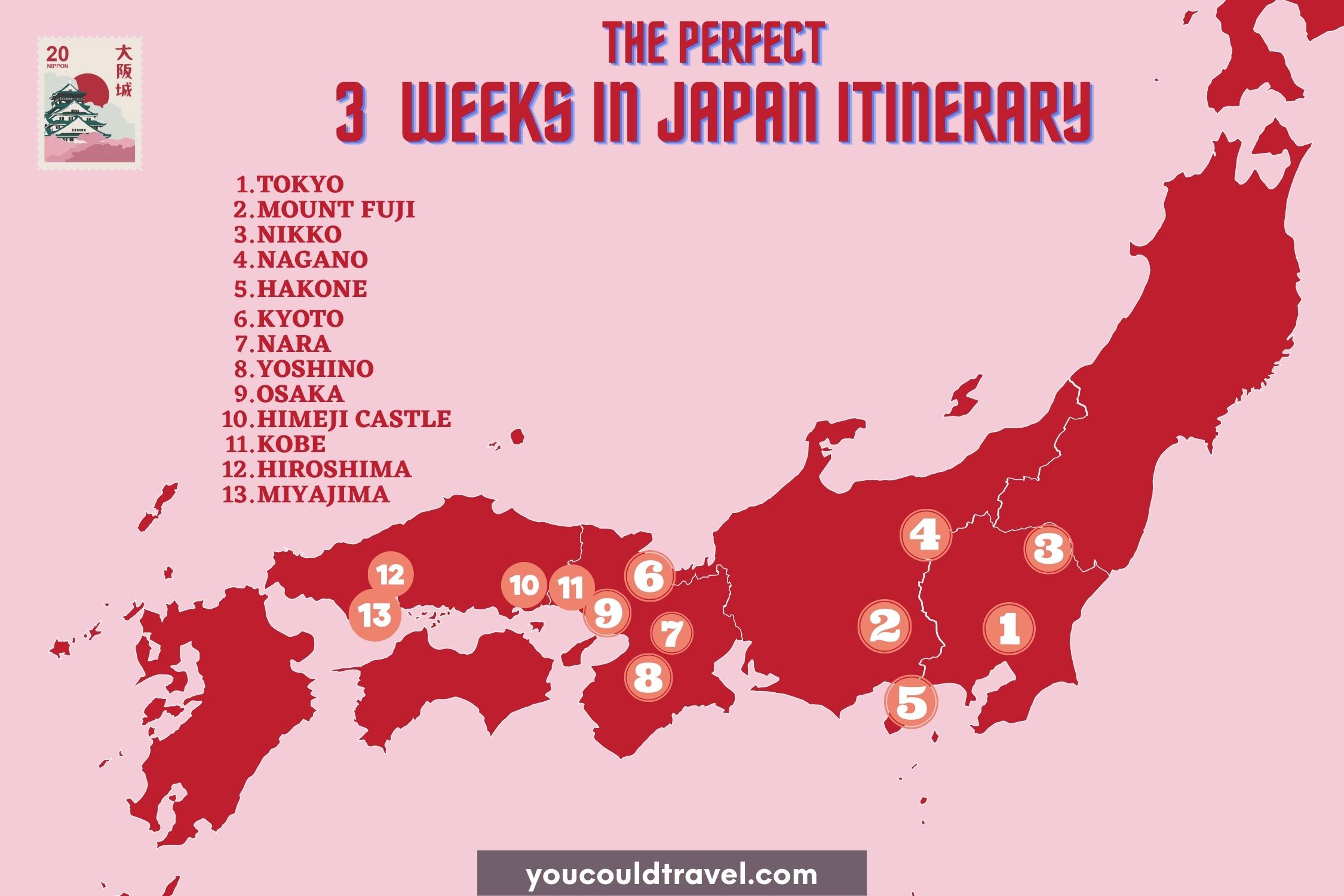
Table of Contents
- My 3 weeks in Japan itinerary
- How to get around Japan
- Useful Resources
- Days 1 – 5: Tokyo
- Day 1: Tour the vibrant Shinjuku
- Day 2: Explore Shibuya and Harajuku
- Day 3: Visit Asakusa, Ueno Park and Akihabara
- Day 4: Go upscale in Chuo City and Ginza
- Day 5: See the old school Shibamata
- Day 6: Mount Fuji
- Day 7: Nikko
- Day 8: Nagano
- Day 9: Hakone
- Day 10 – 13: Kyoto
- Day 10: See Gion and Maruyama Park
- Day 11: Walk through a bamboo forest
- Day 12: Eat in Nishiki market and hike the Fushimi inari shrine
- Day 13: See the best temples and shrines
- Day 14: Nara
- Day 15: Yoshino
- Day 16 – 17: Osaka
- Day 16: See the Osaka castle and eat around Dotonburi
- Day 17: Explore a chilled Osaka
- Day 18: Himeji Castle
- Day 19: Kobe
- Day 20: Hiroshima
- Day 21: Miyajima Island
- Best time to visit Japan
- Japanese Etiquette
- Language in Japan
- Final Thoughts
How to get around Japan
You can get around Japan with a lot of ease because the country has a sound infrastructure. Trains are fast and efficient and are seldom late. Major cities such as Tokyo, Kyoto, and Osaka are very well-connected thanks to an intricate subway system.
Best Tip: For this itinerary, I highly recommend that you invest in a Japan Rail Pass for 21 days and make sure of unlimited train travel around the country. With the use of your Japan Rail Pass you don’t need to buy separate train tickets to take day trips or to visit the major cities from Tokyo. Besides, Shinkansen tickets are costly when bought on their own, so the JR Pass can seriously save you a ton of money. You can even use it on the Yamanote Line in Tokyo, saving you extra money for inner-city travels. I wrote an in-depth guide to the JR Pass to help you make your decision easier.

Japan Rail Pass
The optimal way to explore Japan is with a rail pass that is available for durations of 7, 14, or 21 days, offering unlimited travel across the country. Shinkansen included!
Useful Resources
We put together a wealth of resources for your trip to Japan. Here’s what you need to know.
- Start with this complete guide to planning a trip to Japan.
- Learn what to pack for Japan, to have a comfortable trip.
- I recommend purchasing a Japan Rail Pass for 21 days to make the most of your 3 weeks in Japan itinerary. It does save you money and hassle, so we believe it’s a great investment.
- Once you arrive in Japan, make sure to buy a Suica or Pasmo card. This is a rechargeable, contactless smart card. It’s easy to add money to it and can save you a lot of time when you use the subway system in Tokyo. Both Pasmo and Suica are identical.
Suica and Pasmo have special IC cards specifically designed for short-term visitors to Japan. They are called The Welcome Suica and the Pasmo Passport. - You will want to pre-book a pocket Wi-Fi as having access to the internet while you’re in Japan is a must. By being connected, you can easily check Google Maps and read restaurants reviews and just use Google Translate from time to time. Make sure to book your pocket Wi-Fi before your arrival to Japan. Trust me, it costs a lot less than activating your roaming features.
- I recommend purchasing your tickets for special museums well in advance. Make sure you pre-book your tickets to Disneyland & Disney Sea and Universal Studios Osaka. I recommend using Klook or Viator to book special guided tours and admissions tickets. Japan is a popular destination and tickets can sell out in advance.
- It’s always a good idea to buy travel insurance before arriving in Japan.
- Finally, I write a lot about Japan. Japan is my passion and my favourite travel destination. Please make sure to read my Japan Travel Guide and if you are interested check out my other 7 day in Japan itinerary and 2 weeks in Japan itinerary.
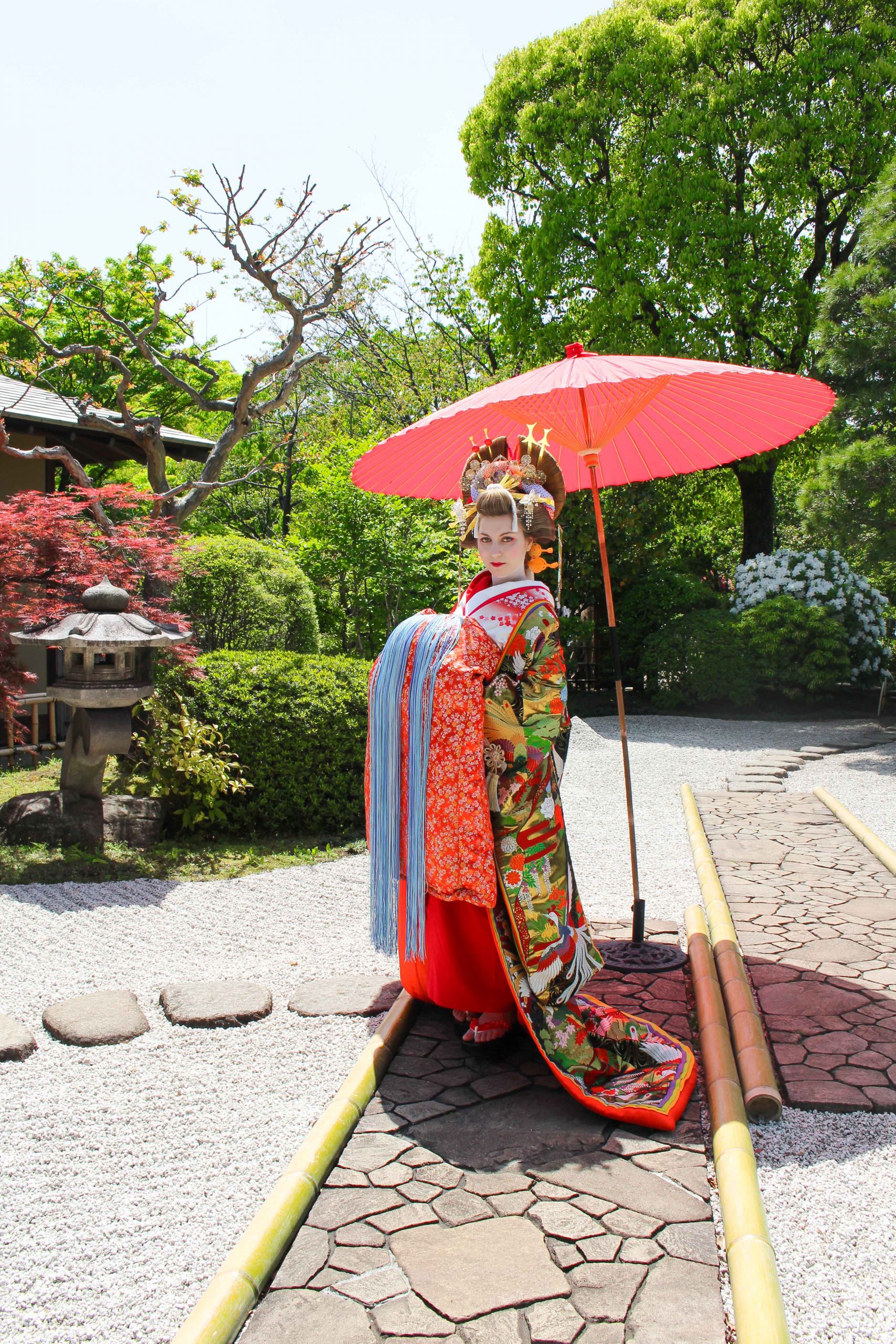
Days 1 – 5: Tokyo
I said it before, and I’ll say it again: Tokyo is my favourite city in the world. I recommend spending 5 whole days in Tokyo on your first Japan trip. Tokyo is a big city and every single day you will discover something new and unique about Japan’s capital.
Tokyo is the world’s largest city, with close to 14 million inhabitants. It’s a big place with an area of 2,194 km². This is why I made sure to divide the days per district, so you can mainly walk as most attractions are within walking distance from one another. Make no mistake, every district is like a city on its own, so trust me, there are plenty of things to do in Tokyo.
Insider Tip: What saved me so much time in Tokyo was using Google Maps for directions everywhere. On Google Maps, it literally tells you what line (with colour coding) to use for the fastest, most efficient route. Some major subway stations in Tokyo are huge, but they are so much fun and an attraction on their own.
There are two airports in Tokyo, Haneda and Narita. Haneda is less than 30 minutes away from central Tokyo. The easiest way to get from Haneda to Tokyo is by Tokyo Monorail. Narita is about an hour from central Tokyo. The best way to get from Narita airport to Tokyo is by taking the Narita Express.
I stayed in so many hotels and districts in Tokyo, but my favourites are always in Chuo City. Chuo City forms the heart of Tokyo. I love it because it’s very much lively during the day, has ideal connections to all main entertainment and tourist districts, but it’s very calm and quiet at night. Here are my hotel recommendations for Tokyo:
- Chuo City – Koko Hotel (My recommendation! Perfect for connections and quiet nights)
- Shibuya – Dormy Inn (upscale location, easy access to attractions)
- Shinjuku – Tokyu Stay Eastside (bright, vibrant and explosive nightlife)
- Ginza – Millennium Mitsui Garden (upscale, perfect for luxury and style)
- Asakusa – Hotel Gracery Asakusa (great for budget travellers)
I also created a complete guide to where to stay in Tokyo, where I wrote details about each location and hotel for more information, including points of interest for every area. And if you want to spend even more time in Tokyo, I have a special 7 day in Tokyo itinerary.

Day 1: Tour the vibrant Shinjuku
Kick off your day in Shinjuku, one of the most vibrant districts in Tokyo. Shinjuku is one of those ultra-modern places in Tokyo with jumbo neon lights, narrow and atmospheric streets and imposing skyscrapers.
Get off at the Shinjuku train station, which is the second-largest train station in the world, and head towards the Shinjuku no nekomae, the giant 3D cat at the east exist of Shinjuku train station.
Next up is Shinjuku Gyoen, one of the largest and most popular parks in the city. Shinjuku Gyoen is especially superb during the cherry blossom season and one of the best hanami spots in Tokyo.
Continue the journey towards the jaw-dropping Shinjuku’s skyscraper district. Head to the top of the Metropolitan Government Building (Tochō for short) which offers one of the best free views of Tokyo from above.
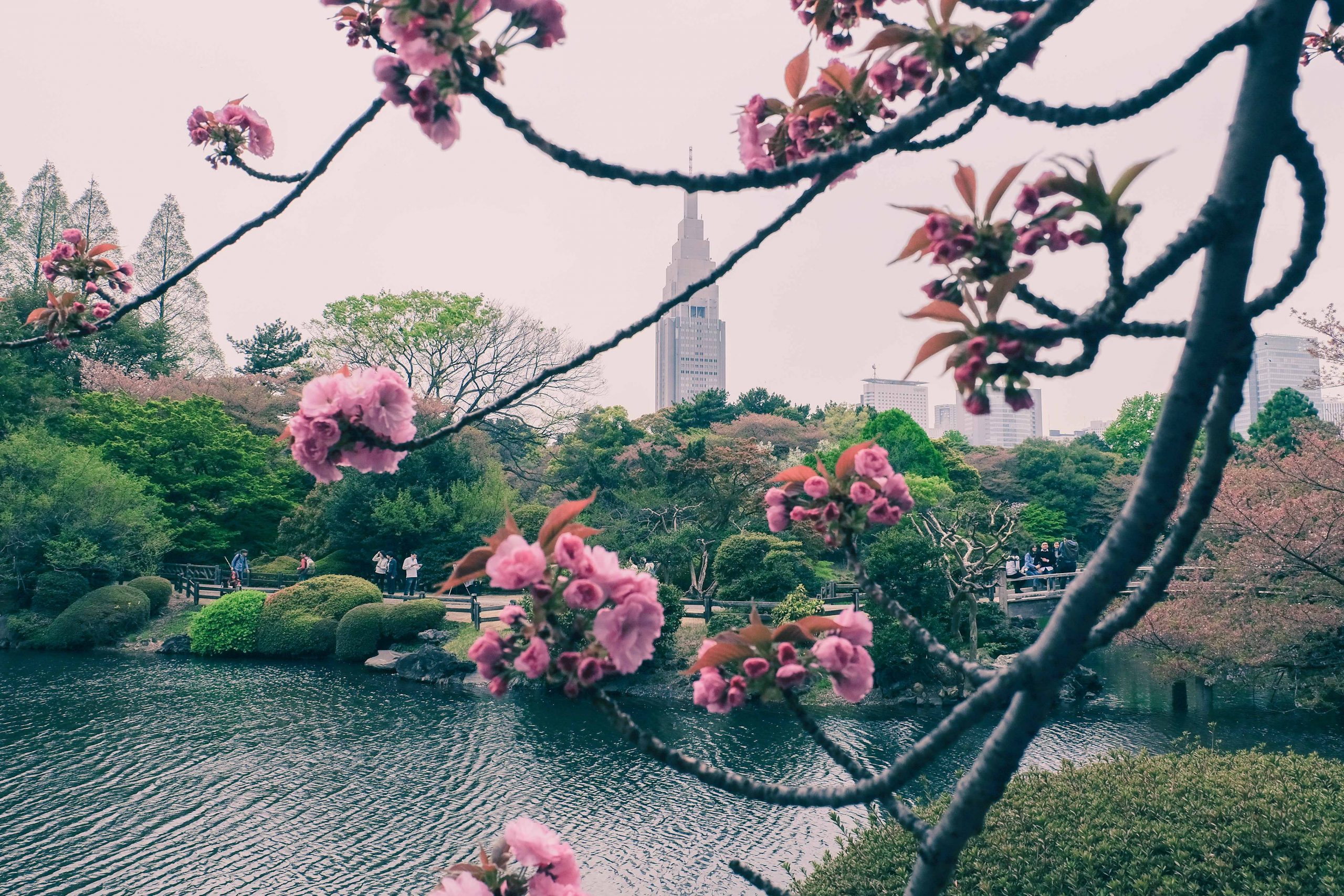
In the afternoon, I recommend heading towards Kabuchiko to spot the iconic Godzilla over one of the skyscrapers. From my experience, it’s best to just walk around Kabuchiko and not actually enter any of the establishments.
Once it’s dark, you’ll see how incredible Shinjuku looks like with its neon light jumbo ads, narrow streets and epic street food. Head to Golden Gai which is known for its special 200+ tiny shanty-style bars, clubs, and eateries. In my opinion, Golden Gai can be a little intimidating, especially for first time visitors. To make the most of the evening, I strongly recommend booking a pub tour with a local to explore the best of the area and learn about these izakayas.
Round off your evening with one of my personal highlights: an authentic food tour around Omoide Yokochō (aka Memory Lane) to try the best skewers (yakitori) in Tokyo.
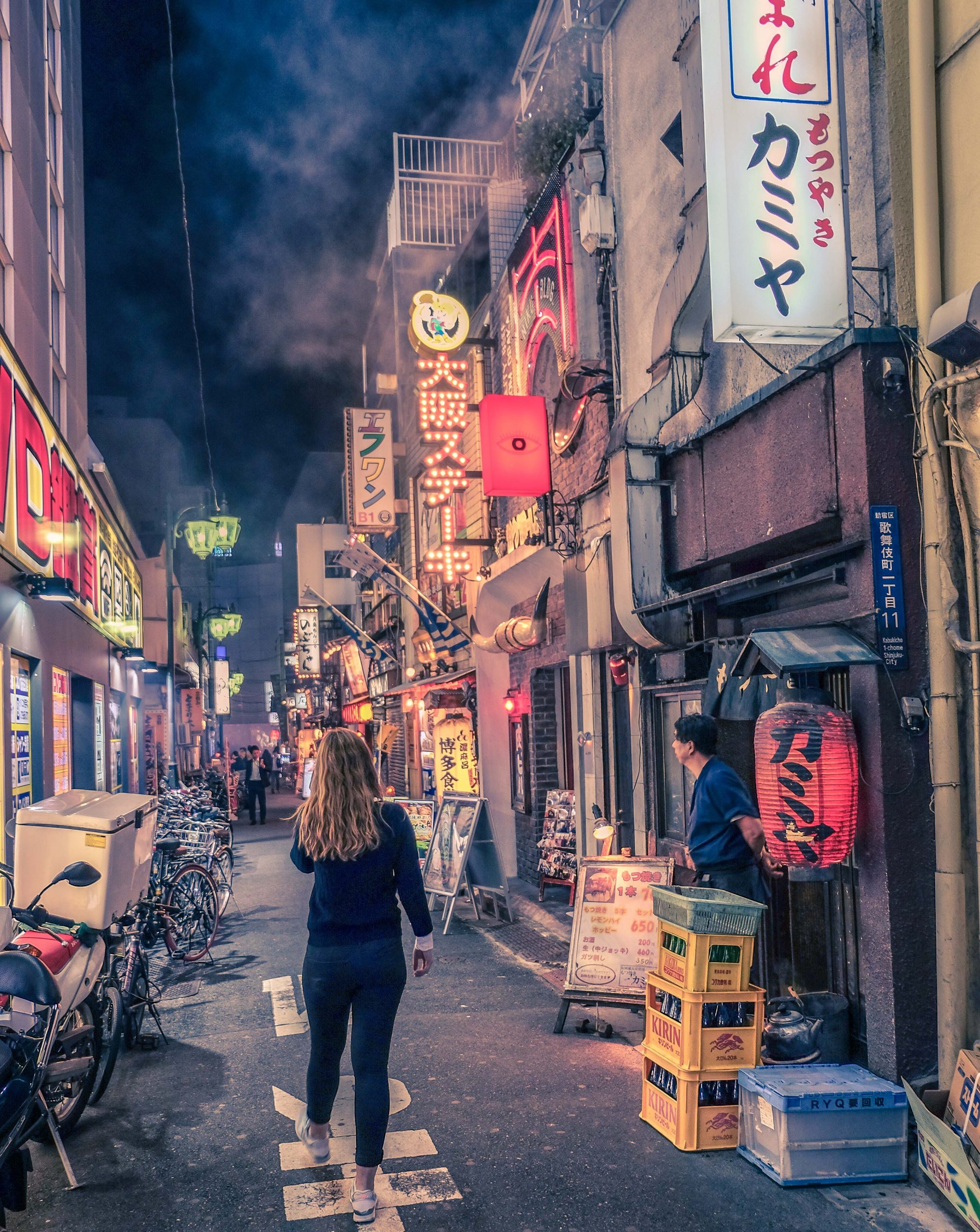
Day 2: Explore Shibuya and Harajuku
Kick off the day by crossing the Shibuya pedestrian scramble. Shibuya crossing has been featured in so many movies, it became one of the most iconic places in Tokyo. It’s one of my favourite places to take pictures in Tokyo.
I recommend skipping the Starbucks coffee by the crossing for views, and heading to Shibuya SKY and take in the best views of Shibuya Crossing from above. Make sure to book your tickets in advance.
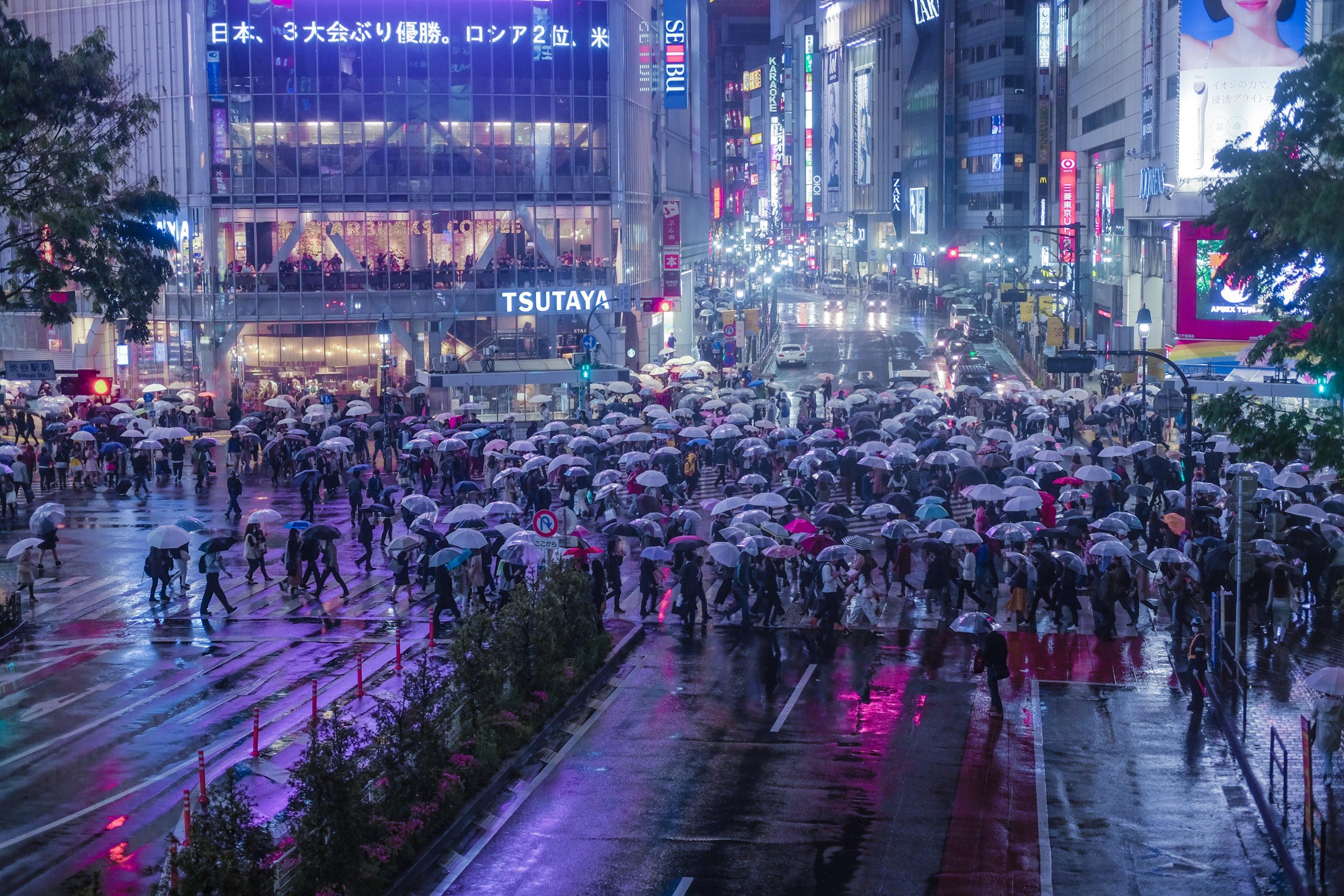
Don’t miss the Hachikō Memorial Statue which continues to honour the loyalty of the Akita dog which came to pick up his owner from the Shibuya station every single day.
Do some shopping in Shibuya in Udagawacho. My personal favourite is the department store called Loft, a multi story shop full of unique Japanese merchandise. It’s one of the best places to grab a souvenir from Japan.
For lunch, I recommend the ramen from Ichiran in Shibuya. It’s my favourite ramen bar in the world, but also one of the most popular in the whole of Tokyo! So expect some queues at the entrance.
Walk for about 15-20 minutes from Shibuya to Harajuku and head straight to Takeshita street. Harajuku is the young district in Tokyo where everything is cute and colourful. Expect everything kawaii here. Don’t miss the colourful candy floss from Totti Candy Factory, then eat some crazy pancakes with fruit and cream from Eggs ‘n Things.
Insider Tip: Visit the Omohara Forest on top of Tokuy Plaza, located in Omotesando Hills. This is my secret (and favourite) spot to go to in Tokyo because it’s relaxing, full of greenery, and it’s on top of a building! This means great views of the city and a young crowd. Besides, on a clear day, you can even see the top of Mount Fuji from here.
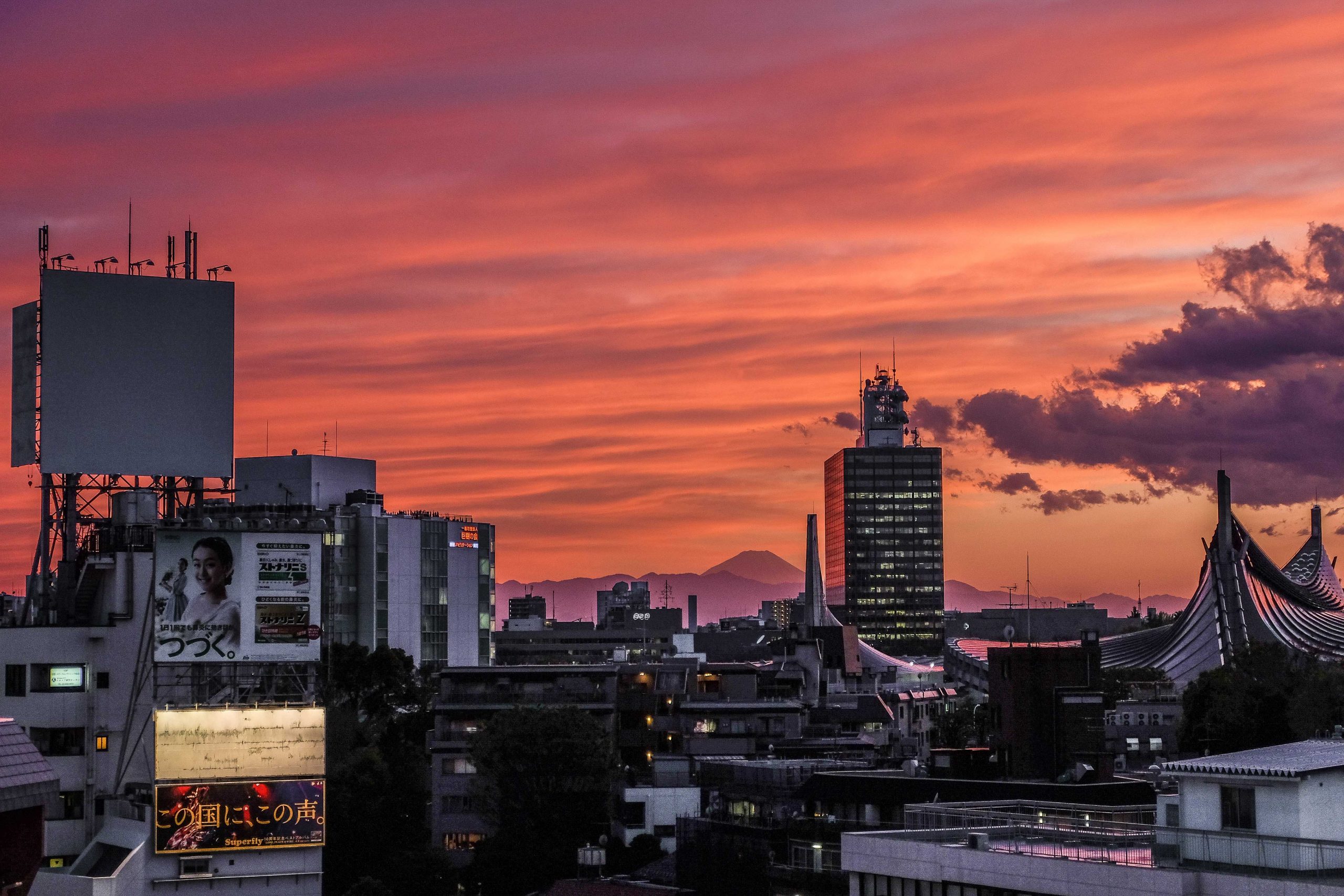
Day 3: Visit Asakusa, Ueno Park and Akihabara
Get your most comfortable shoes and start off the day with a morning trip to Asakusa to see Senso ji temple. Senso ji is the oldest temple in Tokyo and one of the most popular attractions in the city. From my personal experience, it’s best to arrive at first light to avoid all crowds.
Eat your breakfast on Nakamise Dori which is the long street on approach to Senso-ji. You’ll find plenty of street food and snacks and I recommend the melon pan and the age manju which is a fried red bean pastry.

For a unique cultural experience, I highly recommend renting a Kimono in Asakusa and taking numerous superb pictures. Alternatively, try an authentic Japanese rickshaw tour.
From Asakusa, head to Ueno park on foot. You could take the subway, which takes just 20 minutes, but I recommend walking for 35 minutes instead. The walk will take you through the old streets of Matsugaya, an authentic residential district with Japanese town houses.
Once in Ueno, walk to the pond and rent a swan shaped boat, then get some delicious street food like takoyaki (octopus balls), dango (mochi on a stick) or my favourite, taiyaki (fish shaped cake).
Don’t miss the Kiyomizu Kannon Temple and admire the special platform made from a pine tree called tsuki no matsu.
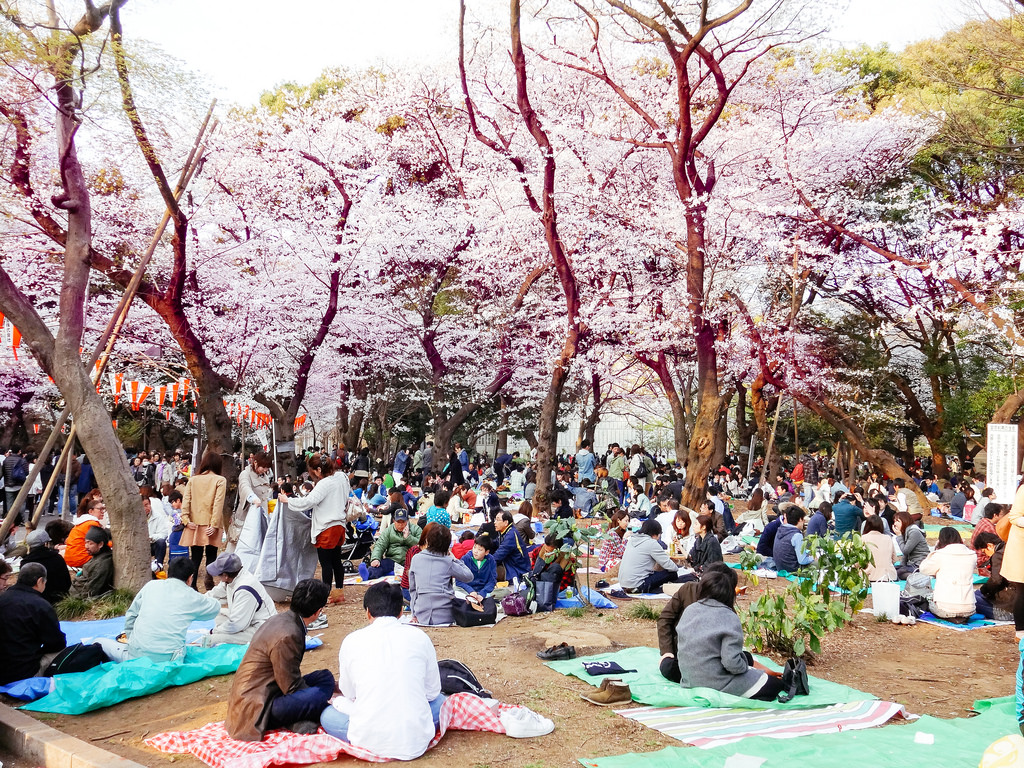
Walk for just 20 minutes from Ueno Park to the centre of Akihabara. I have a bit of a love/hate relationship with Akihabara, to be honest. Dubbed as the electric town, Akihabara was once the place to go get cheap electronics. However, it’s more of otaku heaven right now. Nevertheless, no Japan trip is complete without seeing Akihabara. And it is the ideal place to find everything anime and manga, so bring your inner Sailor Moon. Don’t miss shopping in a Don Quijote for some food local treats.
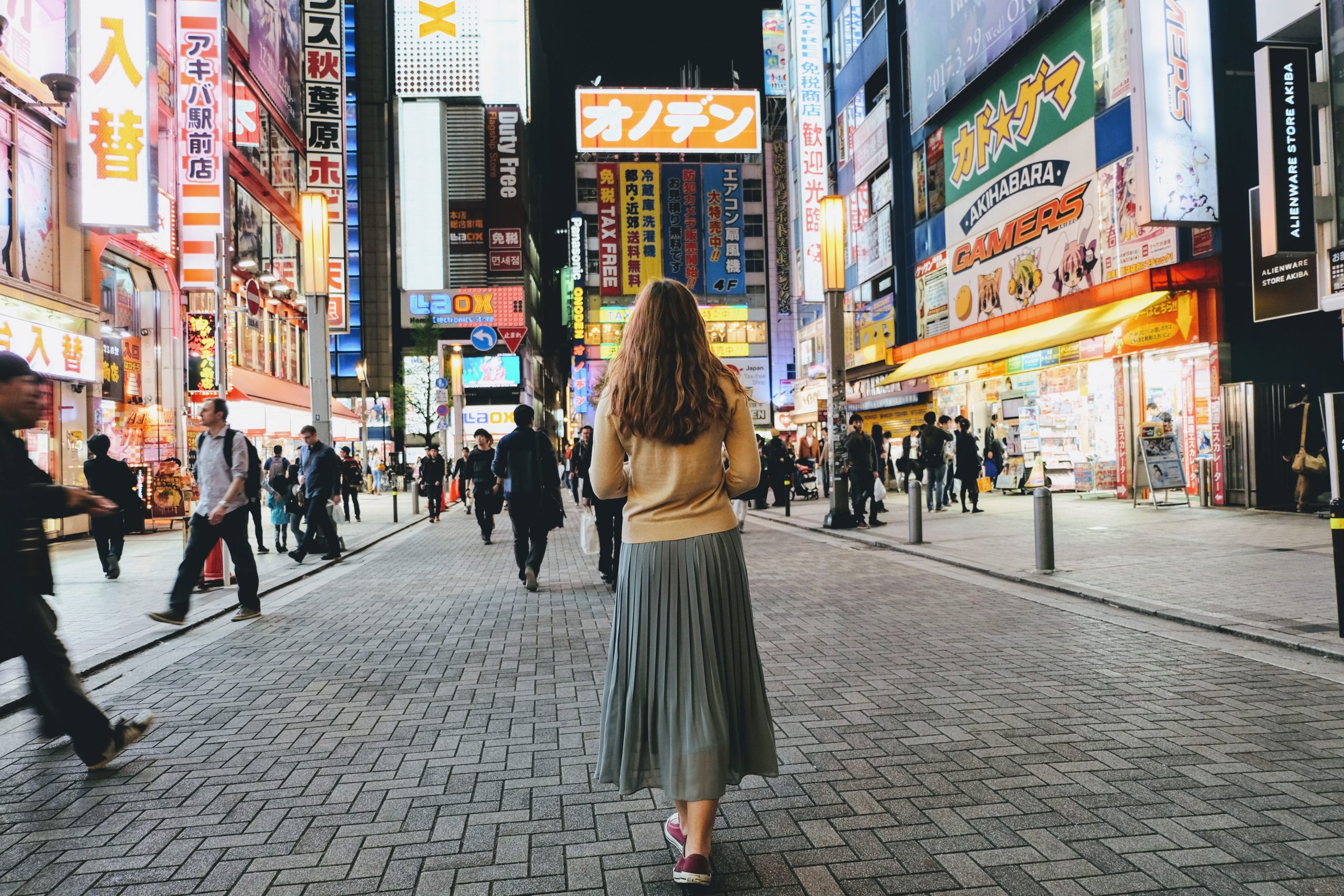
Day 4: Go upscale in Chuo City and Ginza
Today is all about seeing an upscale Tokyo with Japandi cafés and restaurants, luxurious restaurants and stunning department stores. And you’ll find them all in Chuo and Ginza.
Kick off your morning with a visit to teamLab Planets and immerse yourself in the coolest digital art museum in the city. This is a super popular attraction in Tokyo with tourists and locals alike, so make sure to prebook your tickets well in advance.
I recommend visiting the teamLab’s restaurant, Uzu, for their colourful vegan ramen. My personal favourite is the Japanese matcha ramen. For something sweet and refreshing, their cucumber ice cream is delicious.
Take the Yurakucho Line to Ginza-itchome Station, and head straight to Ginza Six. Ginza Six is a large department store in Ginza that has everything from art to some of the best food and cocktails in the district. Grab one of their rarest coffee from the Ginza Tsutaya Book shop and cafe located on the 6th floor, then go to the top of Ginza Six (13th floor) and relax in the rooftop garden. This garden is 4,000sqm, and it even features a small shrine and a water feature.

Insider Tip: Visit Ginza on weekends, when the main Chuo Dori becomes a pedestrian promenade. It’s perfect for really cool pictures.
Not going to sugar coat this, Ginza is expensive and some shops and restaurants here feel very exclusive. But this is part of the fun, experiencing all sides of Japan in this itinerary.
From Ginza Six walk for 20 minutes to the Tokyo imperial palace and head to the East Gardens. This is the official residence of the Japanese emperor. Access to the east gardens is free of charge.
Round off your evening by diving deep into authentic Japanese culture and book tickets at Kanze Noh Theater. Noh is a form of dance drama performed since the 14th century. You won’t be able to take pictures during the show, but I strongly recommend this cultural activity. Make sure to book your tickets at least one month in advance.

Day 5: See the old school Shibamata
Kick off your final morning in Tokyo by heading to Shibamata, one of the coolest old school neighbourhoods in the city. Shibamata has that Edo period charm you don’t normally see in Tokyo. And there’s plenty to do here, too. I was pleasantly surprised by how much I liked the nostalgic feel around Shibamata. Not to mention, it’s perfect for street photography.
Often seen as often the beaten path, Shibamata is the perfect place to escape some of the crowded places in Tokyo. Head straight to the main street, lined with sweets shops and restaurants. Try dango with sweet yuzu sauce, my favourite street snack in Shibamata.
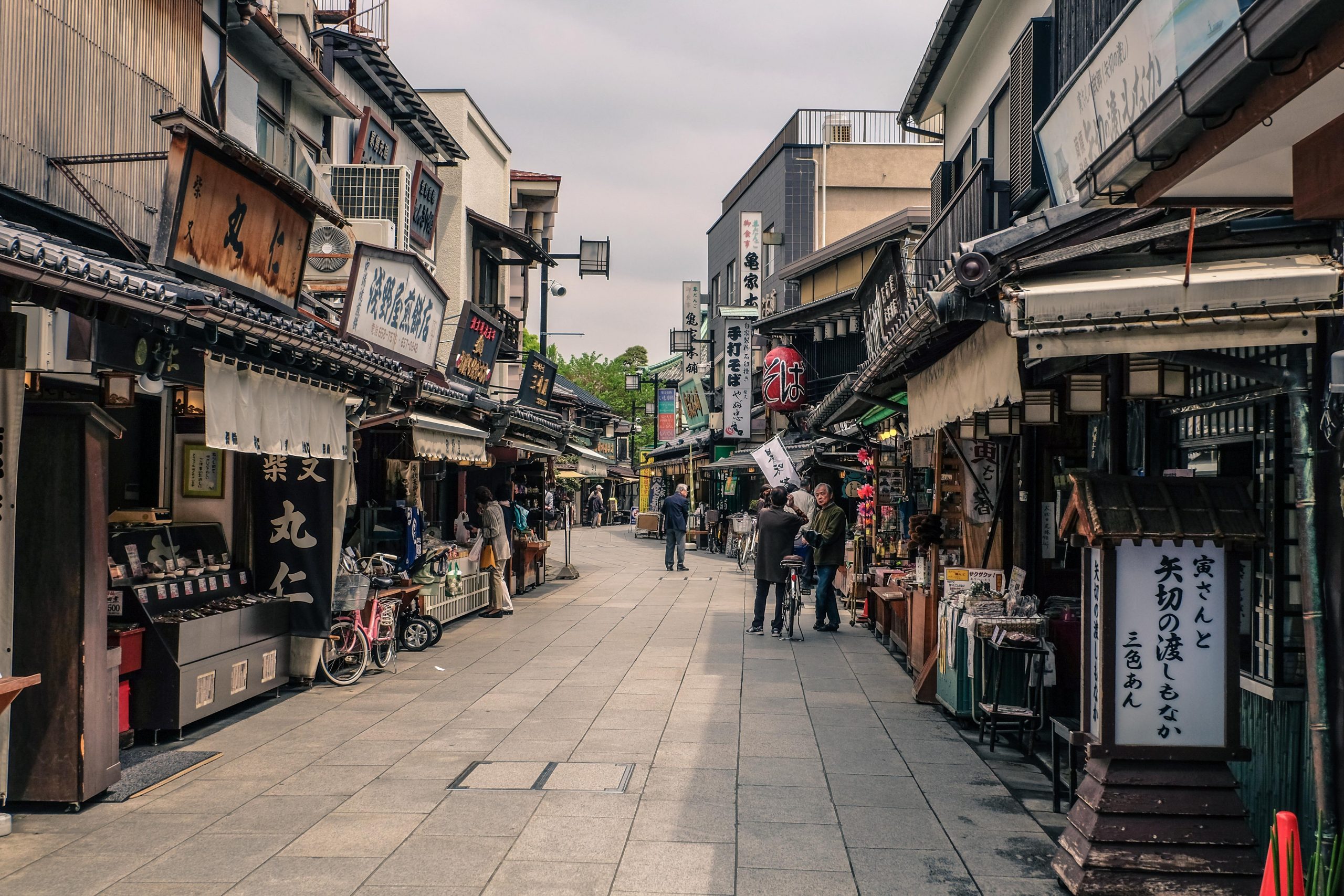
Visit the Taishakuten Temple, the main attraction here. Taishakuten Temple is a Buddhist temple founded in 1629.
Don’t miss the Shibamata Haikara Yokocho and Toy Museum, which specialises in old school candy and toys. It’s a chance to see a nostalgic side of Japan with old-time sweets and games.
For lunch, sit down in any of the restaurants on the main street in Shibamata. I ordered a bento box for lunch and I swear I never tastes rice this good.
See the Yamamoto-tei, located just a few moments away from Taishakuten. I recommend it for the stunning Japanese garden. Sit back with a cup of tea and wagashi and admire the perfectly manicured trees.
End the day with a relaxing walk by the banks of Edogawa River before returning to the Sjhibamata train station. From there, catch a train back to Tokyo.

I recommend rounding off your 5 days in Tokyo by heading to the observation deck in Mori Tower, located in Roppongi Hills. Purchase tickets to the sky deck and take one final look at Tokyo from above, this time during nighttime. You’ll see this vast city from 250 metres above sea lever. What impressed me the most is that Tokyo continues to stretch far beyond the line of the horizon. Last admission is at 9pm.
An alternative is seeing the city from the Tokyo Tower, although I, personally, think the Mori Tower is the most impressive.

Day 6: Mount Fuji
No Japan itinerary is complete without a trip to the iconic Mount Fuji. Mount Fuji is considered sacred in Japan and while you see it on every postcard, let me tell you, it’s not that easy to see in real life. Being so elusive and usually covered in a blanket of clouds is what makes seeing Mount Fuji so special.
I recommend a day trip from Tokyo to Mount Fuji which is ideal to be able to see the mountain, walk around a stunning lake, take breathtaking photos and also visit a rural Japanese supermarket. Sounds great? Let’s get started.
Start your day as early as you can and head to the Shinjuku station for your day trip to Lake Kawaguchi. It’s easy to get there, but it does take a bit of time.
Make sure to have your Jr Pass handy. Take the JR Chuo Line from Tokyo’s Shinjuku Station to Otsuki Station (70 minutes, about 2500 yen by direct limited express train or 100 minutes, 1320 yen by local trains with typically one transfer along the way).
From Otsuki, take the Fujikyu Railway Line to Kawaguchiko Station (55 minutes, 1140 yen one way). The Japan Rail Pass and other JR passes are not valid between Otsuki and Kawaguchiko.
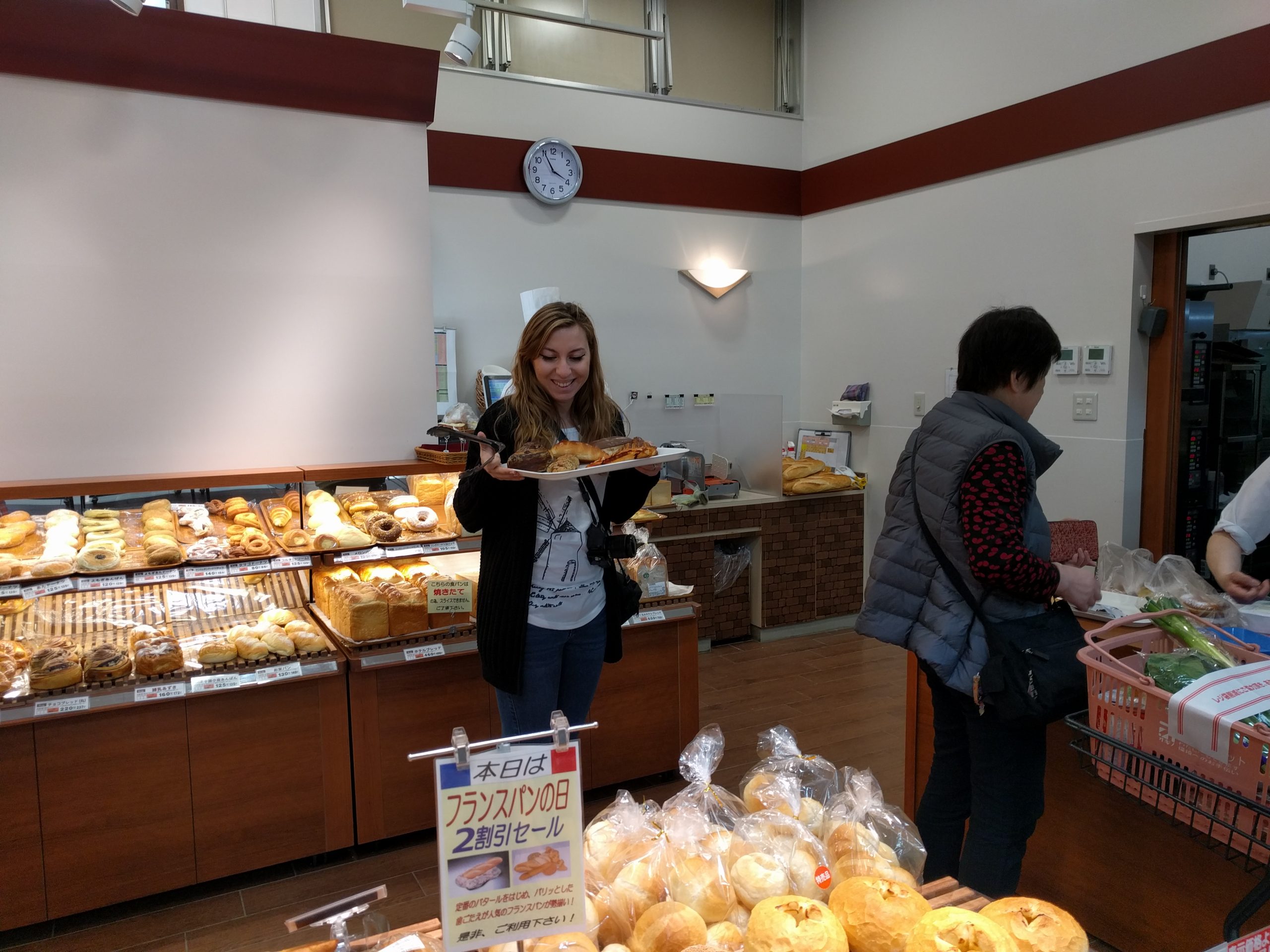
If you’re hungry, make your way to the Ogino supermarket and grab yourself a snack. This was the largest supermarket I visited in Japan and I loved it so much. While there are many supermarkets in Tokyo, none were so big. Get one of the precooked meals and look for snacks. A word of warning though, this place is so cool, you might just spend a whole hour browsing.
From Ogino, head towards the Ubuyagasaki Shrine by Kawaguchiko Bridge which is a 35-minute walk. This is where I managed to take some incredible pictures of Mount Fuji in all its glory.
If you prefer, take the Mt. Fuji Panoramic Ropeway, an aerial lift ascending to an observation deck with astounding views of Mt. Fuji and the lake. You can’t go wrong with either options.
Insider Tip: If you visit in the autumn, head to the Momiji Corridor Lake Kawaguchi, a gorgeous location lined with maple trees to celebrate the fall foliage.

Day 7: Nikko
Today you’ll take a day trip to Nikko, a small city in Tochigi Prefecture. I love Nikko because it’s the ideal place for nature lovers. It has remarkable food, a UNESCO World Heritage Site, stunning waterfalls, natural hot springs, and it’s home to the Nikko National Park.
Start off the day by taking the Tohoku-Hokkaido Shinkanen to Utsunomiya Station, then change to the Nikko Line until Imaichi Station. Walk for 5 minutes from the Imaichi Station towards the Watanabe Sahei Sake Brewery (450 Imaichi, Nikko 321-1261, Tochigi Prefecture). The owner offers free tours of the brewery with free sake tasting. It’s the perfect time to purchase authentic sake and support a local business.

From Imaichi Train station take the Tobu-Nikko Line for 9 minutes then walk towards the Nagomi Cha-ya restaurant for the perfect Kaiseki lunch. The restaurant is open between 11:30 am and 3:30 pm. My recommendation is to try yuba (tofu skin) here. I don’t think I’ve ever tasted a more delicious tofu dish.
Make your way to Shinkyo Bridge. Shinkyo Bridge is a beautiful vermilion bridge which can only be crossed by the Royal Family. You can pay a small fee to stand on it and take a beautiful picture. I recommend just taking a picture from afar. It looks just as special and atmospheric.
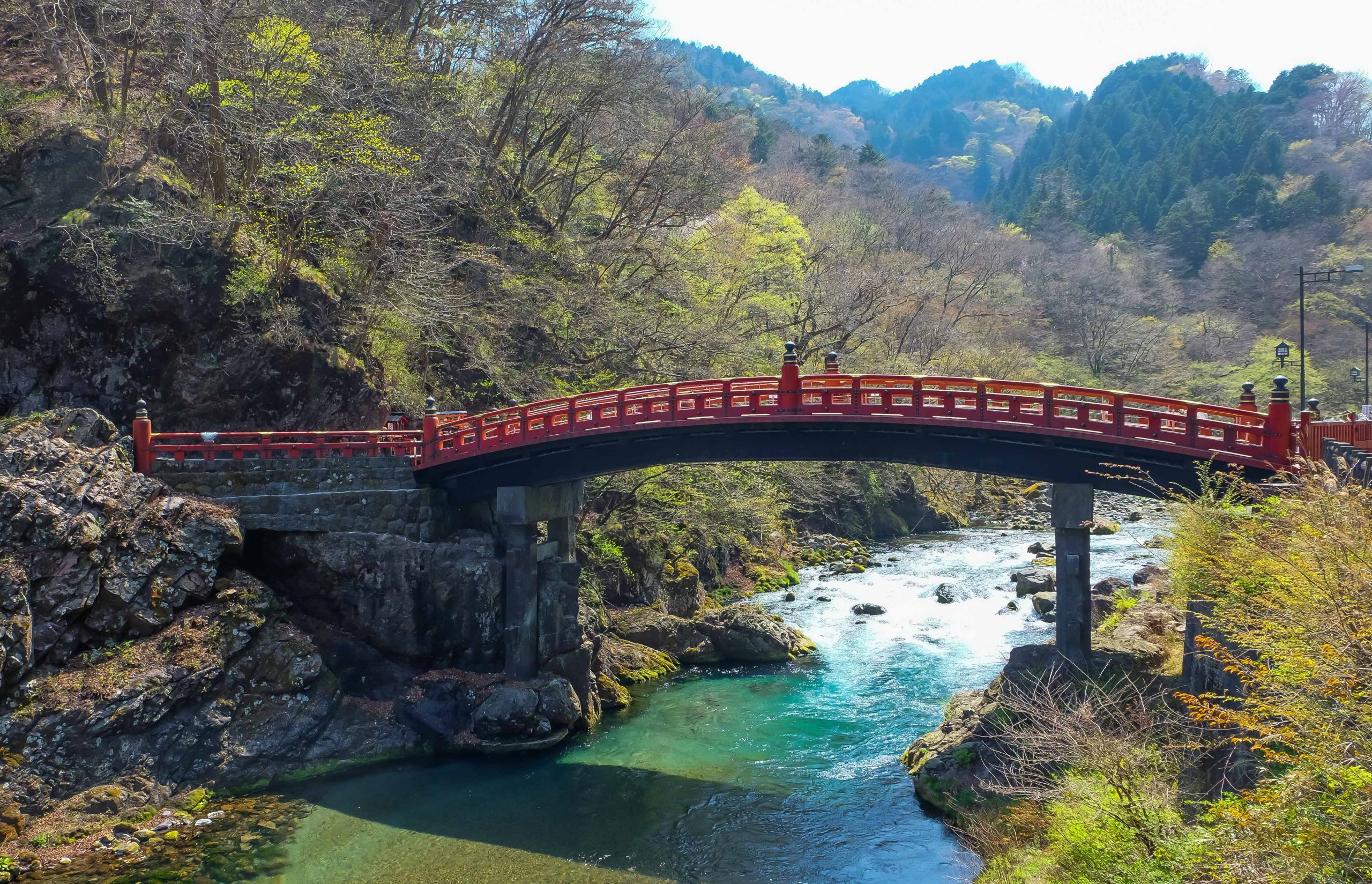
Head towards the Tōshō-Gū Shrine which is a UNESCO Heritage Site, and it belonged to Tokugawa Ieyasu, the founder of the Tokugawa shogunate. This very well-known shrine was once part of an amusement park. Back then, the entrance was free of charge and people from all over Japan came to visit the lavish decorations were subject to amusement, talk, and admirations.
Take the Yasukawa Town Bus from the Nishisandoiriguchi Bus Stop towards the Chuzenji Onsen. Walk for about 3 minutes to get to the famous and impressive Kegon Falls. Kegon Falls are located in the Nikko National Park, one of the 34 national parks of Japan. An exciting bucket list destination during your three week Japan itinerary.
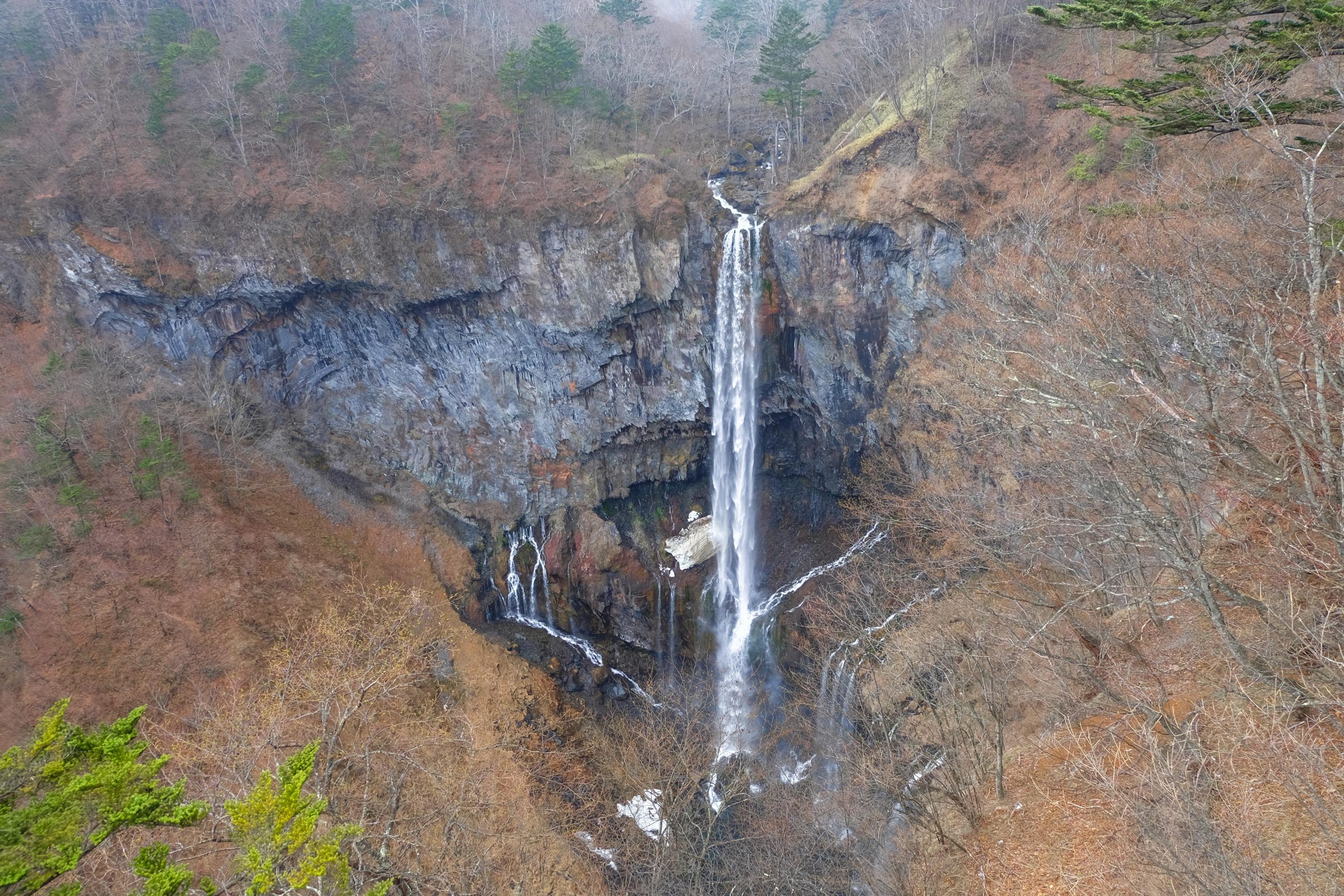
For lunch, I can wholeheartedly recommend Tonkatsu Asai, a fantastic tonkatsu restaurant just by the shores of Lake Chuzenjiko.
For something truly off the beaten path, head to the British Embassy Villa Memorial Park. This was a former summer retreat of the British Embassy, built in 1896. What I find most interesting is that the villa, while black, is not painted. It was done with the shou sugi ban technique, which is an 18th century method of preserving wood by charring it with fire. The practice is used with Japanese cedar to weatherproof it.
On the way back to Nikko, make sure to stop at the Kanmangafuchi Abyss, a forested volcanic canyon with jizo stone statues of Buddhist monks. It’s the perfect picture opportunity in Nikko.

Day 8: Nagano
Today is a day trip to the Japanese Alps in Nagano Prefecture. You will pass through Nagano City (the highest prefectural capital in Japan!), make your way to Yudanaka, the hot spring town, and walk to see the renowned snow monkeys in the Jigokudani Yaen Koen.
The park is open daily from 8:30 am to 5 pm in the warmer months and 9 am till 4pm during winter (November to March). This is the reason I recommend starting your trip as early as you can.
Start your trip by taking the Shinkansen from Tokyo to Nagano. The trip is covered by your JR Pass, so yay for saving money. When you get to Nagano station, head to Midori shopping centre and go to grab yourself a snack. Midori is in the station itself, so you don’t have to exit. You’ll find fried snacks, sweet melon bread and delicious looking cakes.
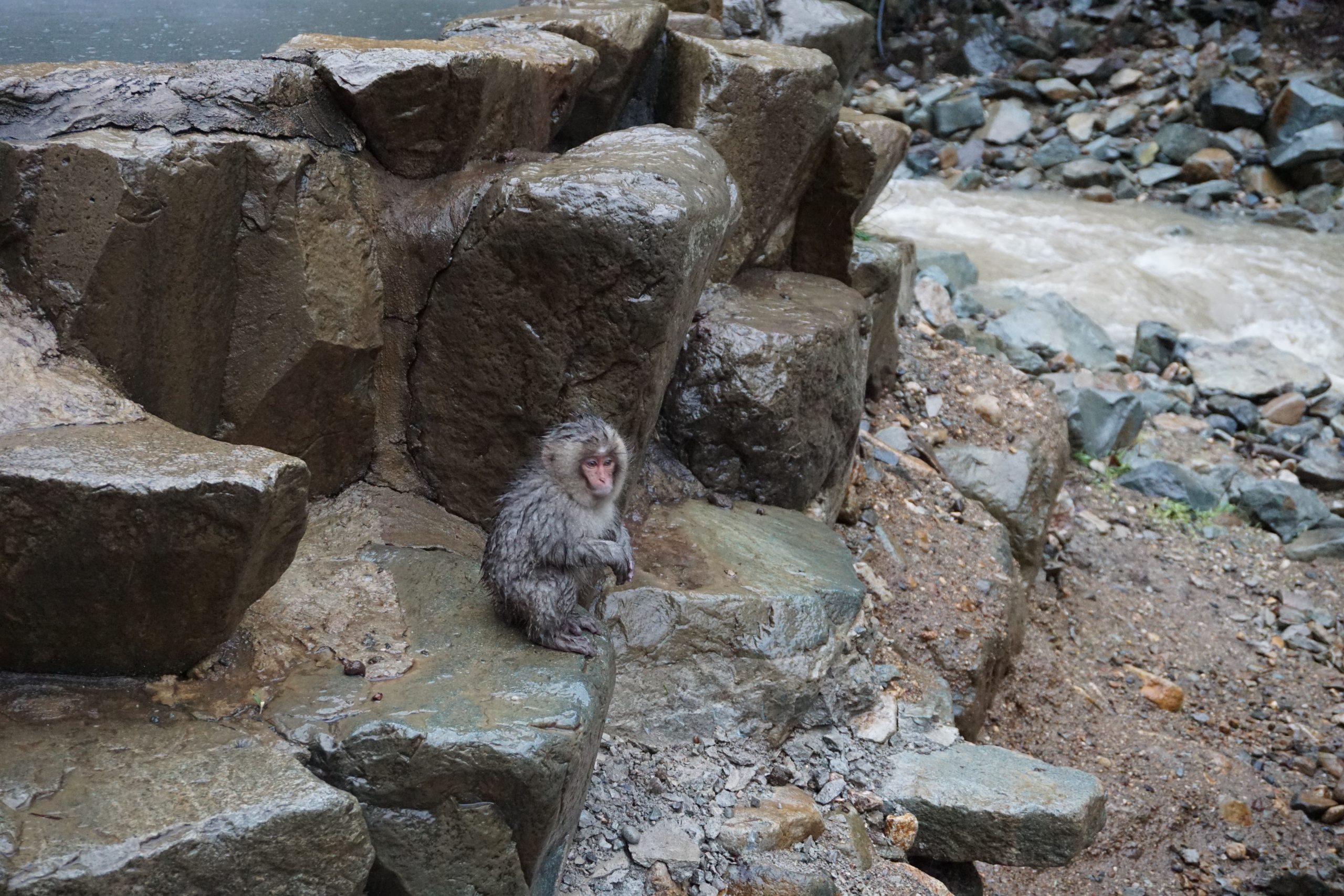
From Nagano station, get the Nagano Dentetsu (Nagaden) train line to Yudanaka Station. Yudanaka is a romantic hot spring resort and honestly, it’s so incredibly atmospheric you will want to come back and stay in a ryokan here. This small town dates back to hundreds of years. Many people visit the neighbouring Shibu Onsen known for its picturesque river valley with the snowy alps backdrop.
From Yudanaka take the bus towards Kanbayashi Onsen which is where you will get off. This is where the fun begins. From the stop, take the 30 minutes walk through the cedar forest on your way to the snow monkey park.
You don’t need to book in advance to visit the Snow Monkey Park. Just grab your tickets from the entrance and head towards the hot springs where the gorgeous snow monkeys bathe. It’s especially atmospheric if you visit in the winter.
Good to know: Please make sure to check the timetable for your bus back to Yudanaka Station. On our trip, we just about managed to catch the very last bus. You shouldn’t make the same mistake.

Day 9: Hakone
I love Hakone so much! I’m adding it to the three weeks itinerary because it’s one of the most incredible places to see Mount Fuji from but also chill in an onsen. Hakone is a famous for its hot springs and I recommend booking a hotel room here for one night. Hakone is perfect for nature lovers.
While most people recommend Hakone as a day trip from Tokyo, I recommend staying here for the night. Book a ryokan with Japanese tatami floor and access to an onsen and sample the true Japanese hospitality. Most ryokans offer dinner and breakfast included, which means after a whole day exploring Hakone, you will come back to an authentic kaiseki dinner. You will then soak in an onsen with views of Mount Fuji.
Start off by taking the Romancecar which is a limited express train and the journey takes about 90 minutes. This train is not covered by your JR Pass, but it costs around 2300 yen. An alternative is to take the shinkansen to Odawara then take a local train to Hakone.
Take the Hakonetozan Line to the Hakone open air museum, which is Japan’s first-ever open air museum. I loved it so much, because there are over 1000 scultures to admire. One of my favourite sculptures is called The Kiss (1908) created by the Romanian sculptor Constantin Brâncuși.
No Japan itinerary is complete without a visit to the Ōwakudani (The Great Boiling Valley) or the Valley of Hell as some visitors call it. Ride the cable car up the mountain and marvel at the sulphuric landscape beneath you. Here comes my favourite part: Once you are at the top, make sure to try the signature black eggs. These are basically a tradition at Hakone, and it’s customary to say a prayer before eating these black eggs (Kuro-Tamago). The eggs are cooked in a sulphur mine, which is how they get their colour. According to the legend which dates back to Heian era, these eggs are meant to increase your life expectancy by seven years.
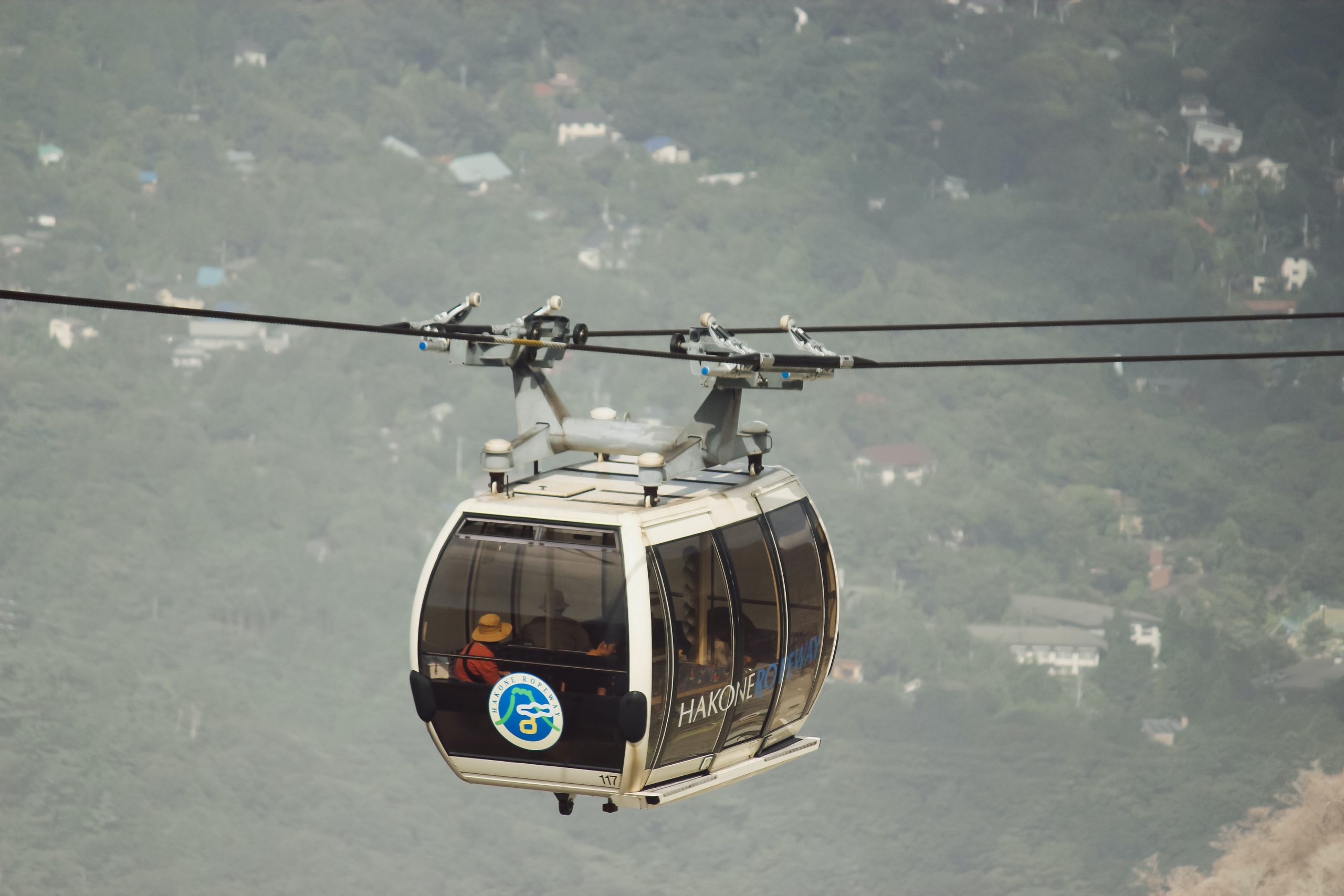
I love a good botanical garden, so next on the itinerary is a trip to Gōra Park, where you’ll see an array of glasshouses filled with tropical plants. But then there is also the stunning view across the steep mountain, so I’d say it’s an epic place to snap some photos.
Good to know: I recommend the Hakone Pass, which gives you a round trip from Tokyo to Hakone and also access to the local attractions and museums. It costs less than 6000 yen per adult saving you lots of money.
End the evening in a ryokan of your choice and enjoy a traditional kaiseki, followed by a soak in a traditional onsen. Now, if you don’t know, an onsen is a Japanese hot spring where people bathe naked. Don’t run just yet because honestly, after experiencing an onsen in Japan, I strongly advise that you try it. It’s really not as scary and intimidating, and I really do think is a must when you visit Japan. Nobody looks at you or stares at your body. Besides, most onsen are separated by gender.
Insider tip: If you are too shy or just enjoy your privacy, book a ryokan with a private onsen. This way you can enjoy the hot springs at your leisure.
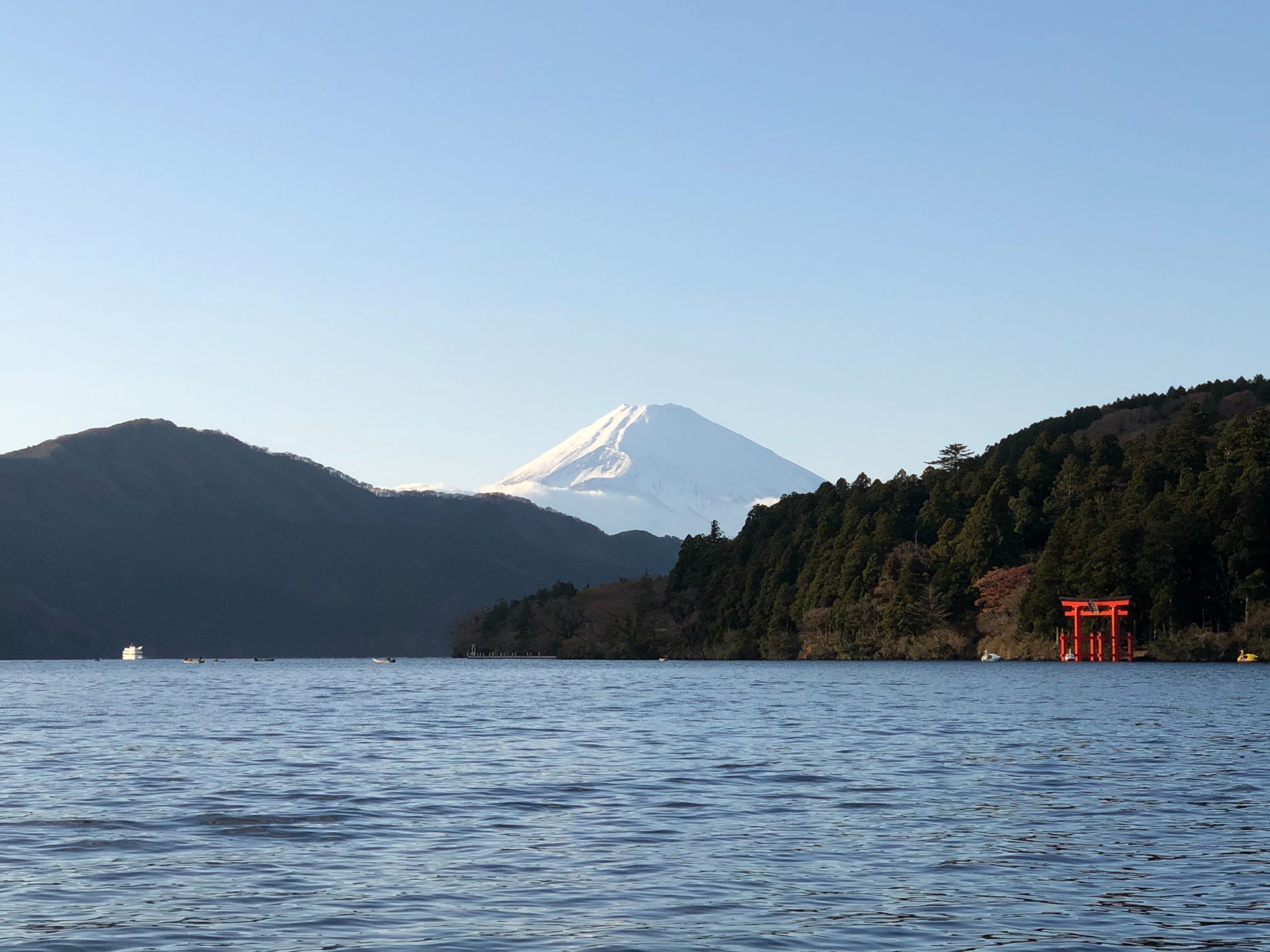
Day 10 – 13: Kyoto
It’s time to head to Kyoto, one of the best well preserve Japanese cities. Once the capital of Japan, it is now the cultural heart of the country. You’ll see the incredible geisha district, meander through a bamboo forest, eat local delicacies in a market called Kyoto’s kitchen and see ancient temples. This part of your 3 weeks in Japan itinerary is cultural, Zen and traditional.
We stayed in many hotels and ryokans with onsen in Kyoto. I recommend Higashiyama Ward because it looks most impressive, and it’s closest to many traditional attractions. The area looks and feels like feudal-era Japan.
- Higashiyama – Dhawa Yura Kyoto (My recommendation and perfect for nature and shrines)
- Gion – Kyomachiya Gion Kanau (perfect for traditional Japan)
- Arashiyama – Nagi Kyoto Arashiyama (perfect for shrines and bamboo forest)
- Downtown Kyoto – Mimaru Hotel (great for shopping streets)
I also created a complete guide to where to stay in Kyoto where I wrote details about each location and hotel for more information, including points of interest for every area. For more info on Kyoto, I recommend checking out our 2 day Kyoto itinerary, 5 day Kyoto itinerary and the best things to do in Kyoto.
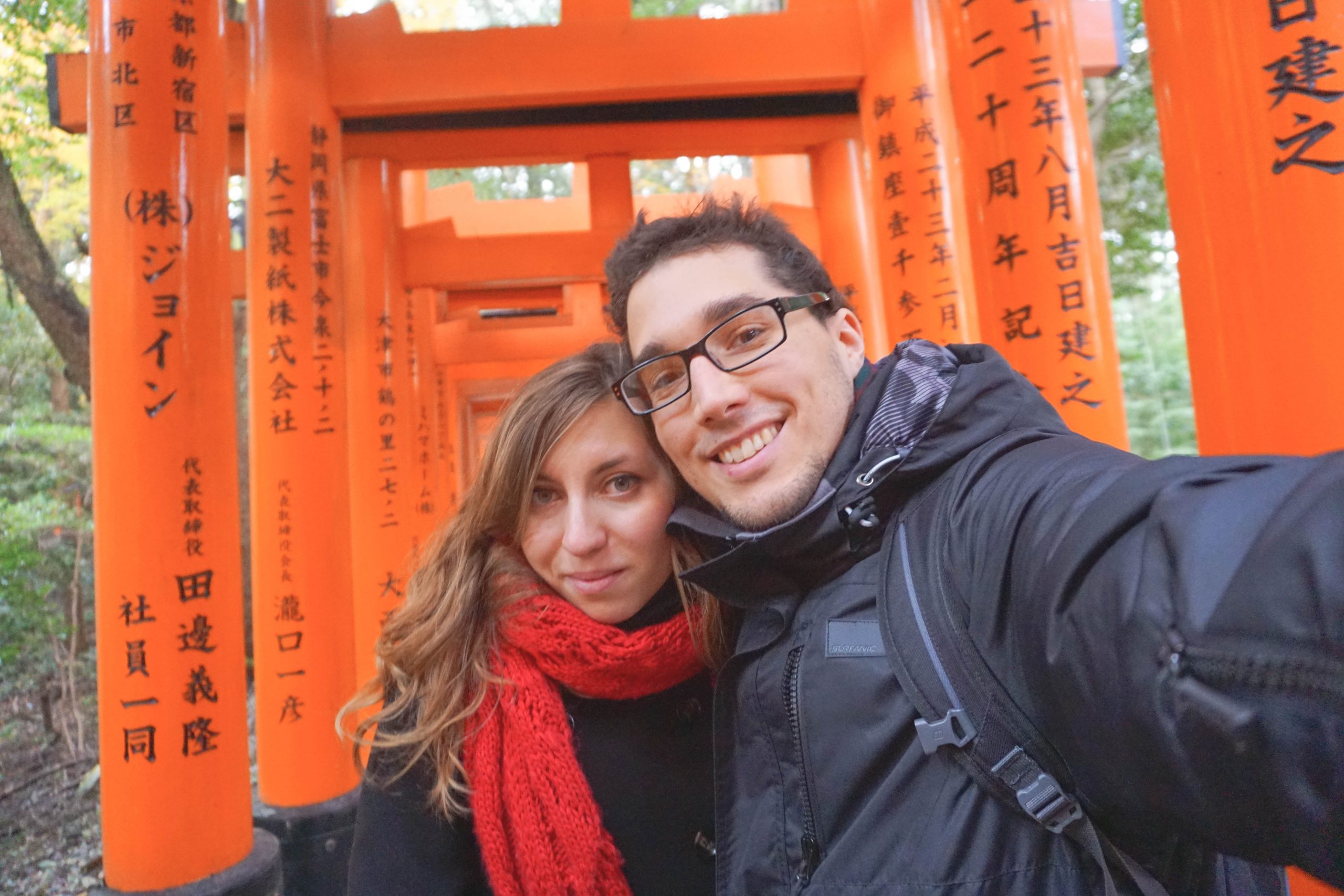
Day 10: See Gion and Maruyama Park
On my first-ever visit to Kyoto, I remember dropping my luggage at the hotel and heading straight to Gion and Maruyama Park. I had arrived to Yasaka Shrine just before it got dark and that’s when I knew that Kyoto will be a splendid treat.
To honour the original trail, I recommend starting by heading to Yasaka Shrine first. Yasaka shrine is a 1350-year-old shrine and one of the most important in the city as that’s where the Gion festival is held.
From Yasaka Shrine head to Maruyama Park, an impressive park with the Gion weeping cherry tree. During autumn, this park looks especially splendid, with its quaint pond, cobblestone alleys and acer leaves everywhere.

Go to Shijo Dori which is the main street leading to Yasaka Shrine and grab an array of local snacks. I recommend that you go from shop to shop and sample all the food here. It’s a great place to grab a yatsuhashi a local confectionary from Kyoto.
End the day with an evening walk on Hanamikoji Street, a well-preserved street with wooden buildings and traditional houses. It’s a wonderful place to grab your dinner.
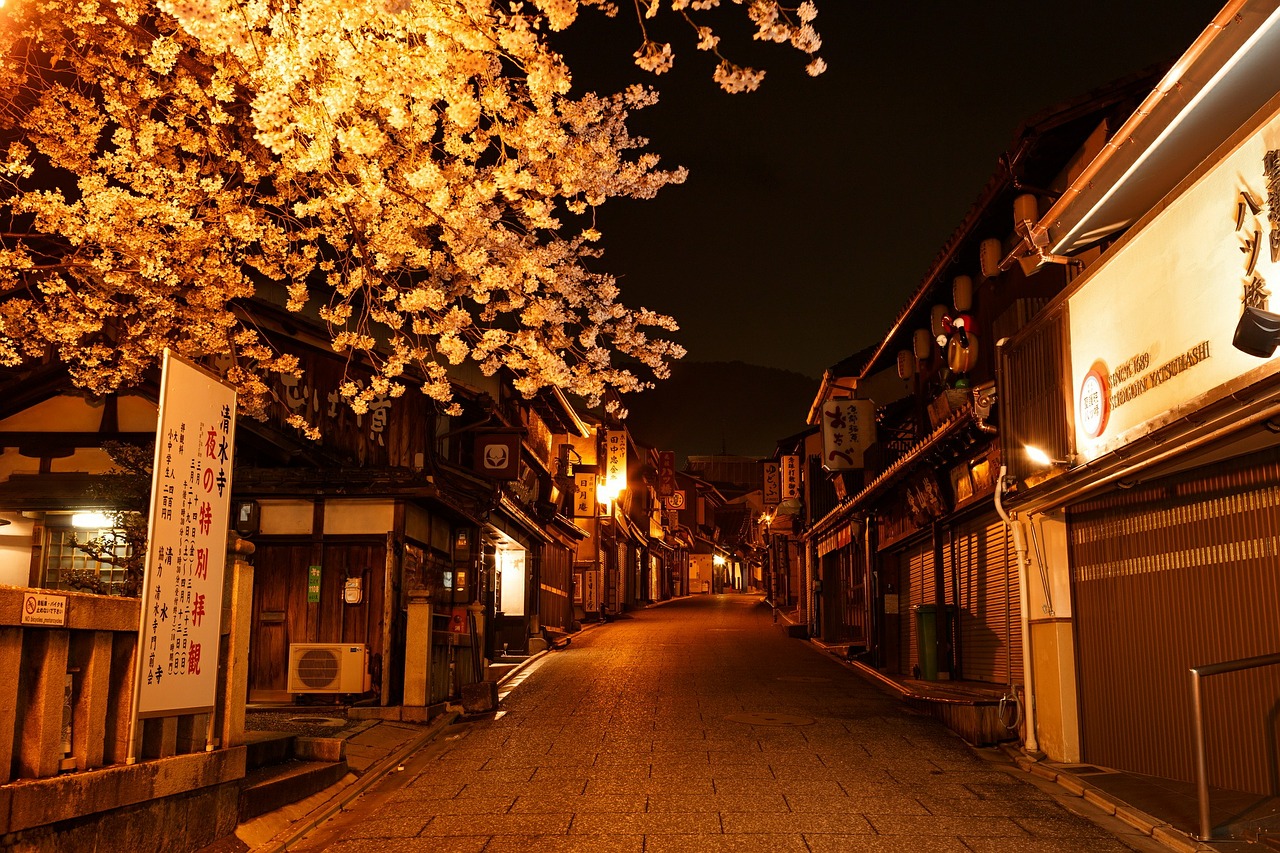
Day 11: Walk through a bamboo forest
Kick-start the day as early as you can and head to the Arashiyama Bamboo Forest. Today’s the day when you will walk through the famed bamboo grove. From personal experience, the path gets extremely busy during the day, so it makes sense to arrive as early as you can. There is no entry fee and no opening times.
From the Bamboo grove, go to the Okochi Sanso Garden, a superb Japanese garden known for its stunning views over the mountains and river. The entry fee is 1000 yen but included is a cup of matcha tea with a wagashi on the side.
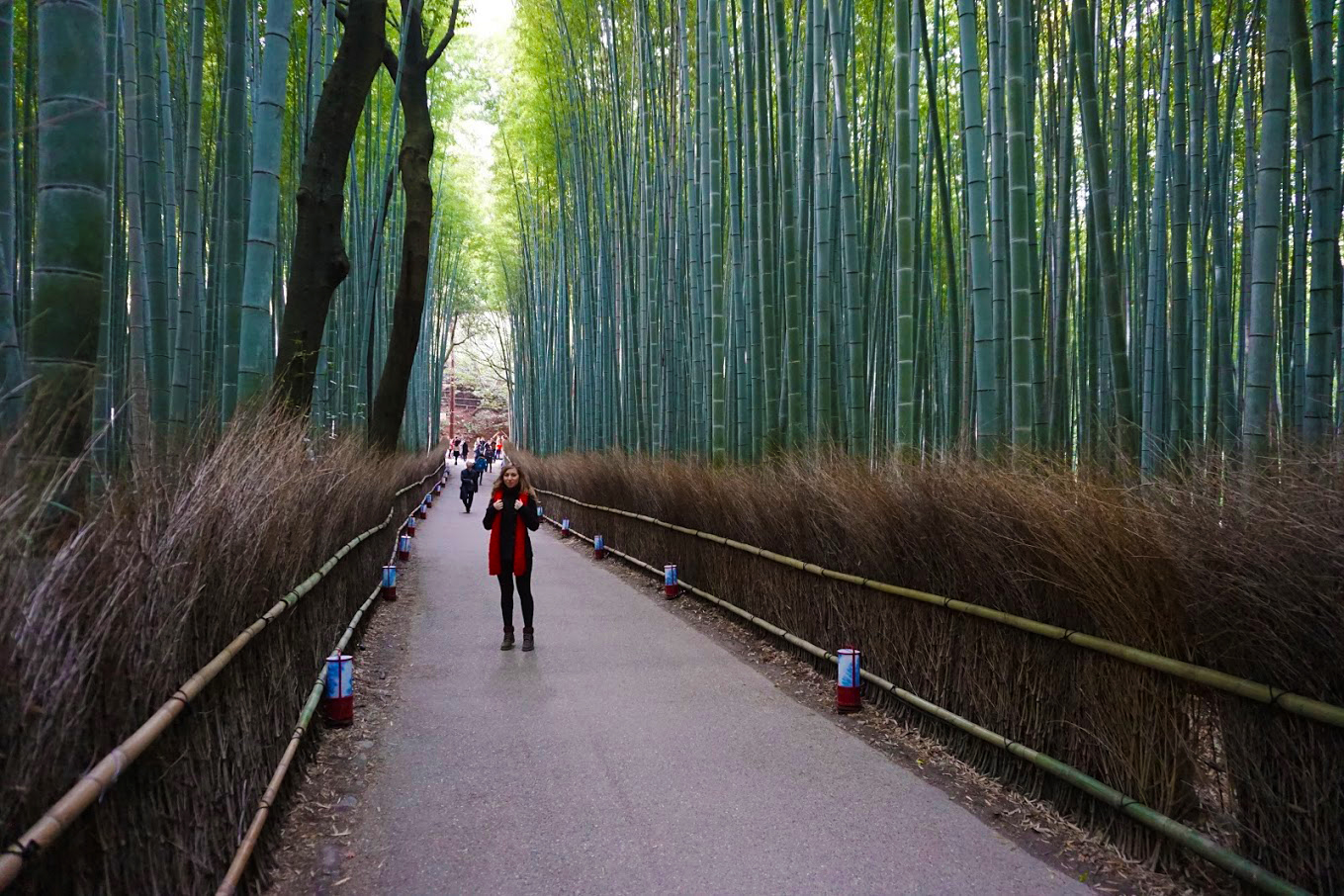
I would like to recommend a few more temples while you are here. See the Gio-ji temple (JPY 300) with its picturesque moss garden and secluded bamboo grove. Then walk on the 19th century Saga Toriimoto Preserved Street en route to Otagi Nenbutsu-ji Temple, my favourite temple from the 8th century. This temple is exceptional because it features 1200 stone heads. To this day, it remains my favourite temple in Kyoto.
In the afternoon, head back towards the station, but stop at the Fu Fu No Yu Onsen for a quick relaxing bath outdoors.
End the evening at the Kyoto Station. I recommend dinner in The Cube. Get either the best tonkatsu at the Katsukura or enjoy a sushi at the Sushi no Musashi. Both are fantastic options, and they even made it to my best Kyoto food guide.

Day 12: Eat in Nishiki market and hike the Fushimi inari shrine
The first time I went to Nishiki market, I felt a little intimated by all the local delicacies on display. But a few minutes later, I decided to try everything my eyes desired and just go with the flow. I recommend you do the same. There is so much food to be enjoyed here, you won’t believe it. Nishiki market is a covered shopping street dubbed as Kyoto’s kitchen. I especially recommend the soy doughnuts and the takotamago which is a quail egg in an octopus head.
If you want the local knowledge, then I recommend taking a morning foodie tour in Nishiki Market.

After food, make your way to the famed Fushimi Inari Shrine. Fushimi Inari Shrine is a mountainside Shinto shrine dating from 711AD. Start hiking on the well-marked path lined with traditional vermilion gates. Stop along the way to catch your breath and to admire all the sights, including the gorgeous fox statues.
My top tip is to stop at Yotsutsuji intersection for the best pictures over Kyoto.
For an impressive evening walk, head back to central Kyoto along the Kamo River.
Finish the day with a fancy meal at one of the many Kaiseki restaurants in Kyoto. I recommend HANA-Kitcho or Kikunoi Honten.
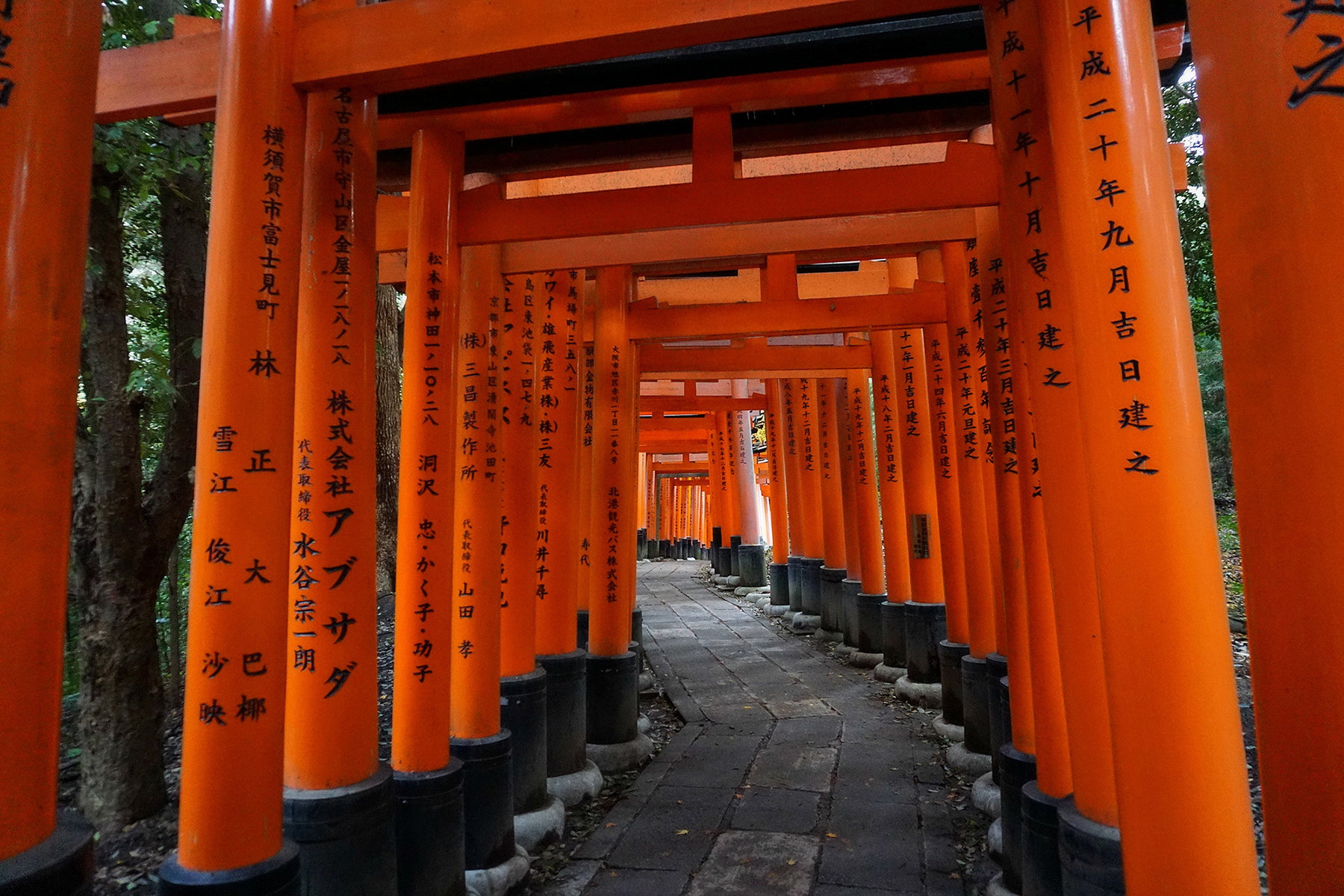
Day 13: See the best temples and shrines
Today is all about the spiritual side of Kyoto with all its shrines and temples. It is said that Kyoto has over 1600 temples, so you can imagine that it was no easy task to select the best for this Japan itinerary.
Start with a trip to Ryōan-ji, the scenic 15th century temple with its famous rock garden. Can you count all the 15 rocks? Spoiler alert, you cannot because this temple is about showing that imperfection can be just as beautiful.
Walk to Kinkaku-ji, also known as the golden pavilion. While you can’t actually enter the interior of this temple, I think it’s the most beautiful and the most photogenic. Included in the entry price are the landscaped gardens, which truly look out of this world.

You can’t visit Kyoto and not Indulge in tea ceremony to learn about the proper way of drinking matcha in Japan. Drink your tea with a side of delicate Japanese sweet called wagashi. I’m fascinated by the art of tea ceremony, and I really do recommend you don’t skip this authentic experience.
My recommendation is to take the public transport to Jisho-ji temple which is a 15th century temple with landscaped garden and mound shaped to resemble Mount Fuji. From here walk the famous Tetsugaku No Michi (Philosopher’s Walk), a pedestrian path that follows the cherry lined canals in Kyoto. The path looks incredible during cherry blossom season, where all the cherry trees are in full bloom.
Stop at the Nanzen-ji to see the Buddhist temple complex with its forested grounds. I propose that you visit the Okuten, the oldest boiled tofu restaurant in Japan. The vibe in the restaurant is exceptional, in my opinion. It looks beautiful, and the prices are very decent for the food you get.
Continue your walk to Kiyomizu-dera which is the iconic Buddhist temple with a viewing platform offering stunning views of cherry blossoms of koyo leaves in Kyoto.
Finish off your stay in Kyoto with a walk on Pontocho, one of the most atmospheric streets in Kyoto.

Day 14: Nara
Nara is one of the most popular day trips from Kyoto and food good reason. Nara was the capital of Japan during the Nara period from 710 to 794. Nara is home to several temples which form a UNESCO World Heritage Site.
It takes just an hour to get from Kyoto to Nara. From the station, start walking towards the Nara Park, well known for its semi tamed deer. Considered in Shinto to be messengers of the gods, Nara’s nearly 1200 deer have become a symbol of the city and have even been designated as a natural treasure.
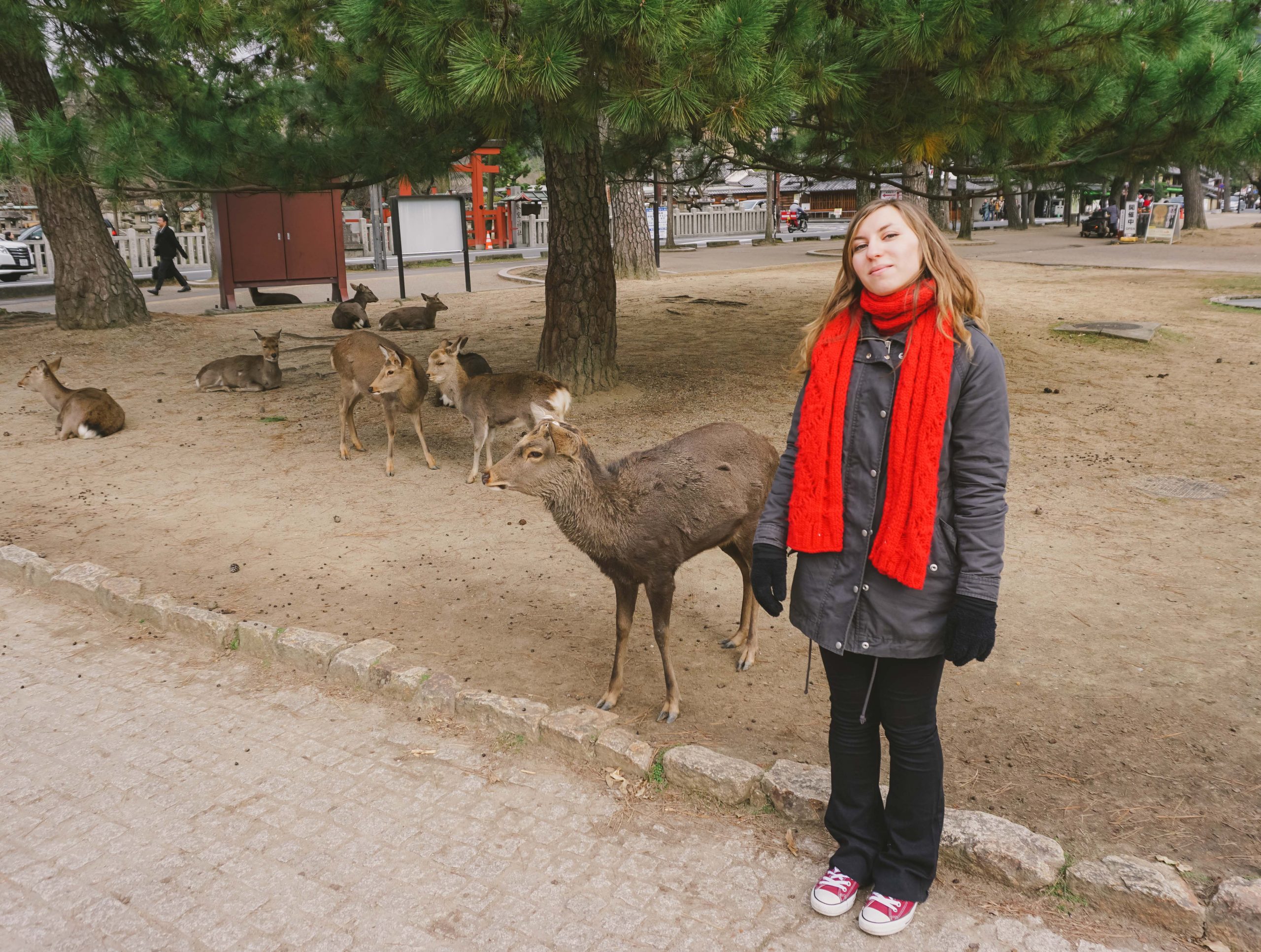
Just minutes away is the Tōdai-ji, a Buddhist temple complex that was once one of the powerful Seven Great Temples. It is well known for its Great Buddha Hall, which has the world’s largest bronze statue of the Buddha Vairocana.
I recommend hiking around the Mt. Kasuga Primeval Forest and see ancient maple and cedar trees. On your hike, stop at the Kasuga-taisha, a Shinto shrine established in 768 AD.
Don’t miss a walk around Naramachi, the well-preserved former merchant district with Edo-era wooden machiya.
I love tea, and I’m really passionate about the Japanese tea ceremony. This is why I strongly advise that on your way back to Kyoto, you stop to Uji. Uji is believed to be the first place to have cultivated green tea. See the Byodoin Buddhist temple (UNESCO World Heritage Site), located just 8 minutes from the train station.

Day 15: Yoshino
Mount Yoshino is located in Nara Prefecture and is currently known as the top cherry blossom spots in Japan. The Sakura trees you will see in Yoshino are over a millennia old, and the beautiful slopes are covered with over 30,000 cherry trees.
Yoshino is not just gorgeous in the Spring, but during autumn too. The whole mountain looks aglow with all the autumn colours. It takes just 2 hours to get from Kyoto to Yoshino. Once you arrive at Yoshino, pick up a local map and start exploring.

While there is a free shuttle to take you up the mountain, I strongly recommend doing the trek. There are narrow pathways that look out of this world. Besides, you will walk next to gorgeous trees, which is part of the reason you are here.
When you reach the top, stop at the stalls to get a souvenir and a bite to eat. Keep on going up the mountain as the further up you’ll get the thinner the crowds.
Visit the Kinpusenji Temple and Yoshimizu Shrine. Venture to Yoshimizu Shrine, which offers famous views of the mountains. Yoshino has plenty of restaurants with stunning views over the cherry trees. I had lunch at Restaurant Sakamotoya.
I recommend going all the way up to Kami Senbon or Oku Senbon which is the upper area of Yoshino, before going back to the train station.

Day 16 – 17: Osaka
Osaka is the second-largest city in Japan and well known for its nightlife, outgoing locals and incredible street food. If you love food, you are going to love Osaka so much because this city is street food heaven. I definitely recommend the famed okonomiyaki, a savoury pancake dish, takoyaki, which are octopus balls and Kushikatsu, skewers kebabs of meat.
There are plenty more things to do in Osaka, including seeing the superb Osaka Castle, snapping the best pictures in Dotonbori and admiring the city from the Umeda Sky building. But of course, there will be lots of food in-between!
To get to Osaka, you can just grab the Shinkansen from Kyoto.
For first time visitors, I recommend staying in either Kita or Minami. Kita and Minami are perfect hubs for tourists because they are close to public transport, many restaurants, pubs, and cafés with tons of shopping opportunities.
Insider Tip: Make sure your hotel is as close to the Midosuji subway line as possible.
- Kita – Nest Osaka Umeda (perfect for first time visitors)
- Minami – Osaka Excel Hotel Tokyu (ideal for shopping experiences)
- Osaka Castle – LuxCare Hotel (perfect for sakura season)
- Osaka Bay area – Quintessa Hotel Osaka Bay (perfect for families with kids)
I also have a complete guide to where to stay in Osaka if you prefer a more in-depth article.
Day 16: See the Osaka castle and eat around Dotonburi
I recommend kick-starting your day with a trip to the Osaka Castle. It’s definitely one of my favourite highlights in Osaka because the castle is turned museum with a superb viewing platform over the city. Don’t miss the multipurpose arena (Osaka-jo Hall). This is a popular hanami spot during the Sakura season.
From the Osaka castle, go to Kita Ward known for its futuristic skyscrapers. I recommend going to Umeda Sky Building to enjoy the best views of Osaka from above. It’s 173 metres tall, and the two cool towers are connected by the Floating Garden Observatory on the 38th floor.
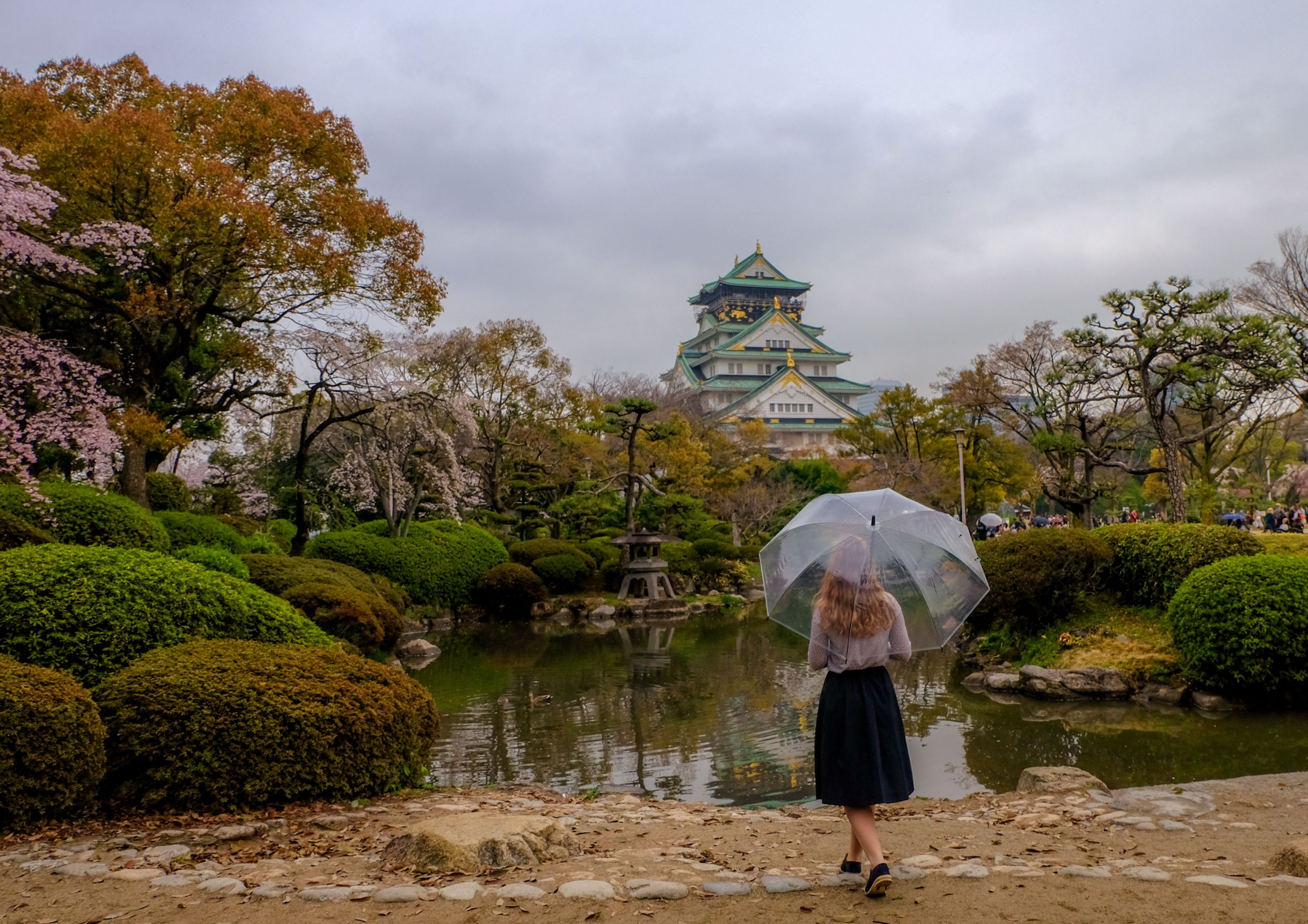
For a bit of shopping, visit the Tenroku Shopping Street, located just 30 minutes away from Umeda Sky Buidling. This is a perfect place to grab a souvenir, and you have 600 different stores to pick from.
I promised great food, so I’m delivering. This 3 weeks in Japan itinerary is all about eating good food, so I’m sending you to the Dotonburi, a canal side entertainment district and one of the most popular attractions.
Enjoy a variety of street food here including takoyaki (octopus balls), Okonomiyaki (savoury pancake), Kitsune Udon (udon noodles with fried tofu), Oshizushi (pressed sushi), and Kushikatsu (fried panko skewers).
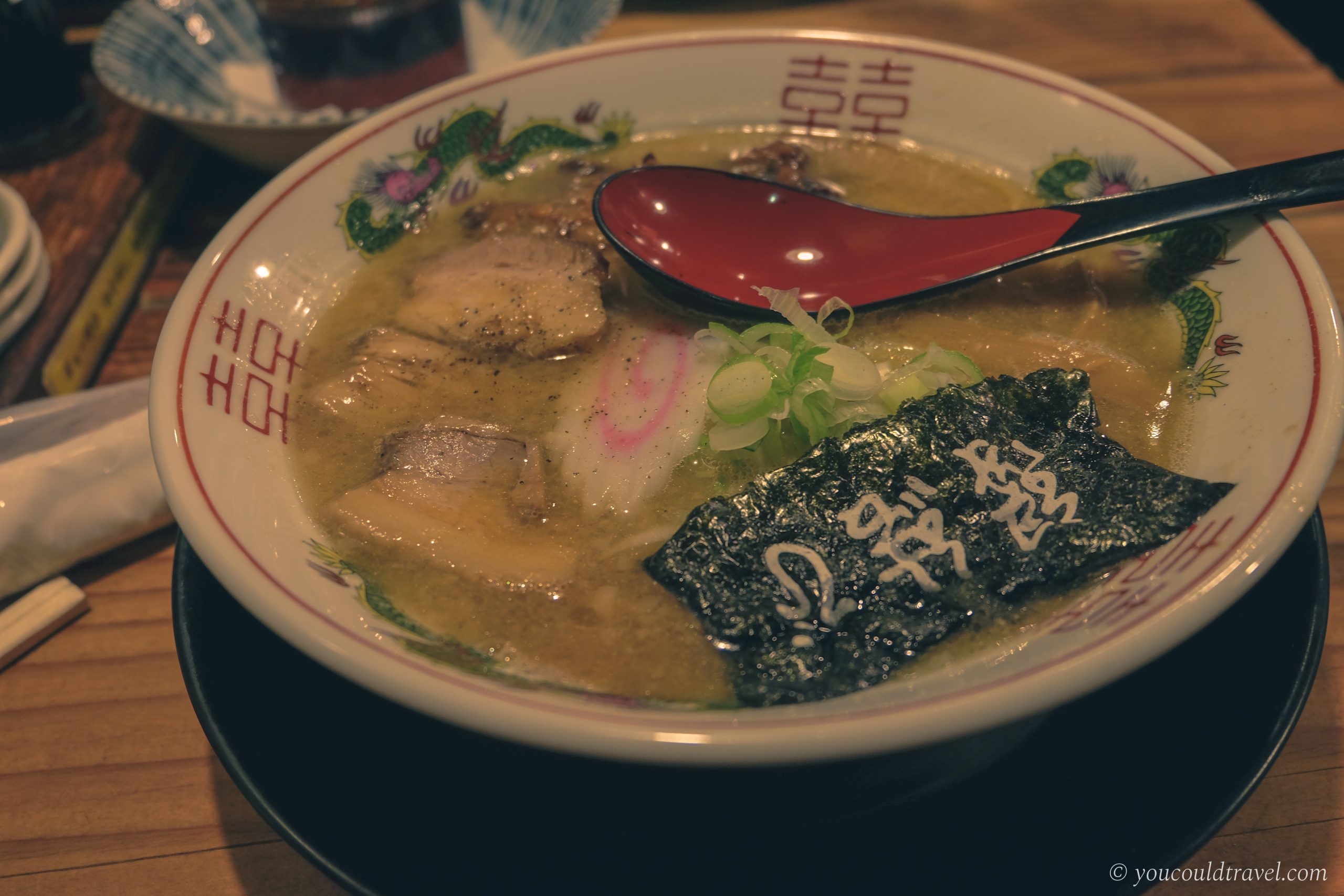
Day 17: Explore a chilled Osaka
Start the morning with a trip to the Osaka Bay to see the Osaka Aquarium, which is the world’s largest aquarium. It’s especially well known for its whale shark. I normally don’t love visiting aquariums, but I was very impressed with the Kaiyukan aquarium in Osaka.
For cool views over the Osaka Bay, take a nostalgic ride in the Tempozan Ferris Wheel. Pick a special carriage with a transparent floor if you want even more dramatic views.
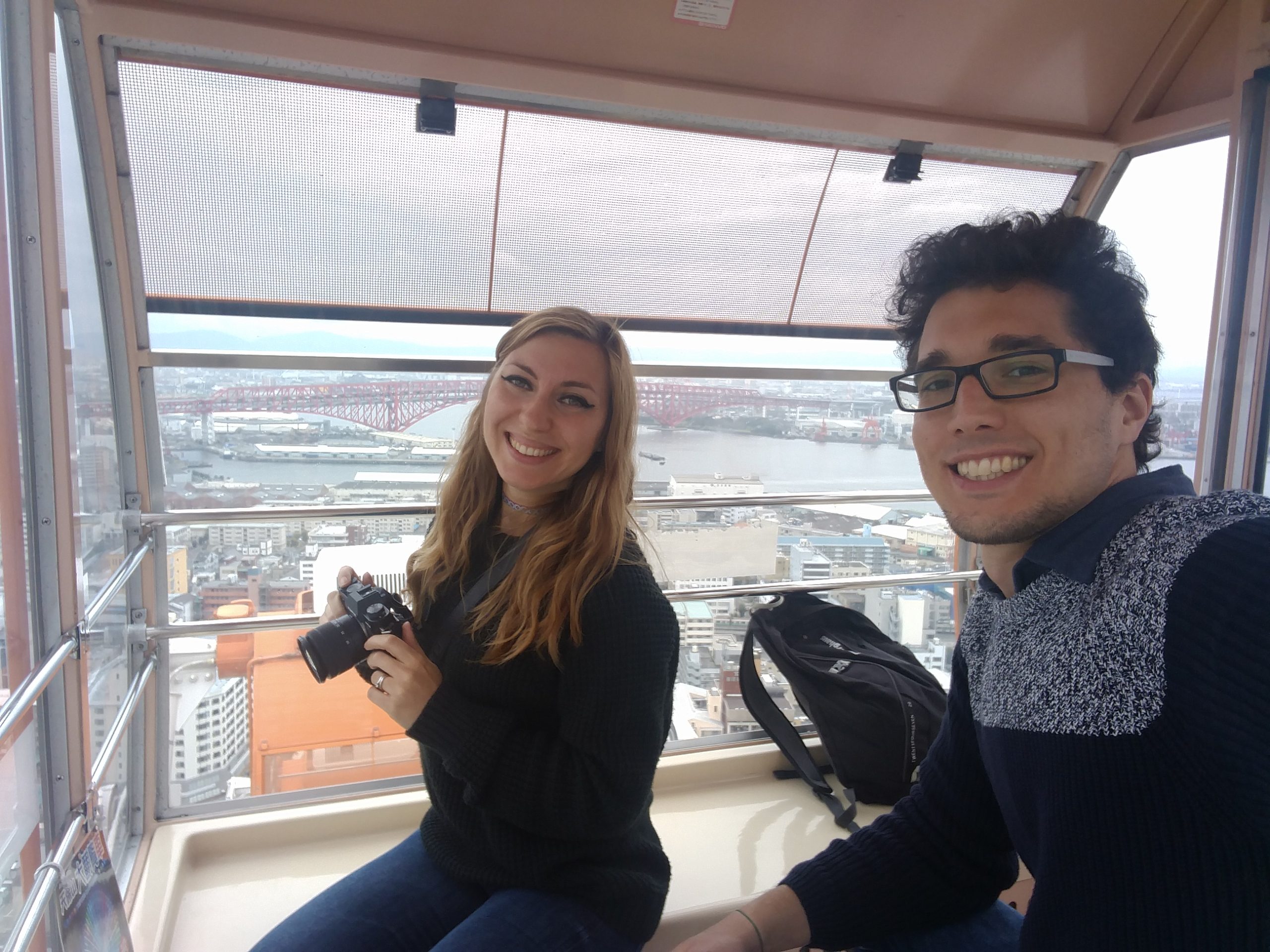
For lunch, I strongly recommend the old neighbourhood called Shinsekai which is very close to Minami area. It’s an ideal place to see the Tsutenkaku Tower. The location is recommended by locals for the kushikatsu, a staple in the Osakan cuisine. Just a few years before, the area was also well known for its special fugu restaurants and its hanging fugu lanterns. Unfortunately, the beloved 100-year-old restaurant had to close down.
Visit the Nipponbashi Denden Town, Osaka’s answer to Tokyo’s Akihabara. This is a place to purchase affordable electronics, tech, and manga paraphernalia.
In the evening, see the atmospheric Hozenji Yokocho, a narrow alley with food stalls and cafés. Then visit the Hozenji Temple, a Buddhist temple with a moss covered statue.

Day 18: Himeji Castle
Long on my bucket list, I was so elated to finally see Himeji Castle in real life. Himeji Castle is in Himeji, a rather awesome city you need to add to your Japan trip planning. Today, I’m going to tell you how to make the most out of this day trip, part of your 3 weeks in Japan.
The Himeji Castle, also known as the White Heron Castle, dates back to 1333. Himeji Castle was initially a fort, but transformed into the gorgeous castle you can see today over the course of centuries. For over 400 years, Himeji withstood the test of time, remaining intact even though it was directly bombed during World War II and went through a series of natural disasters such as the 1995 Great Hanshin Earthquake.
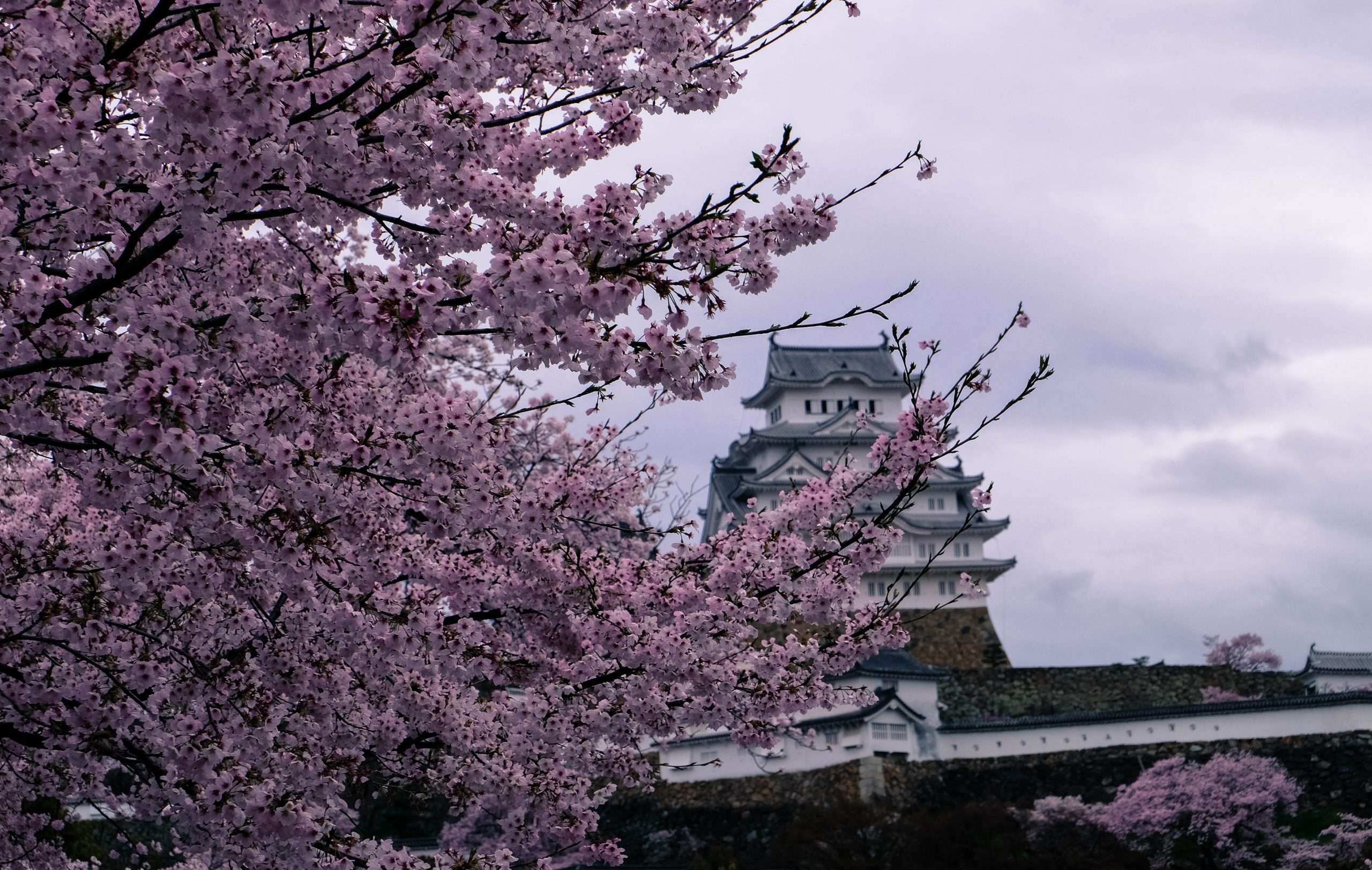
Start the day bright and early and get the Shinkansen to Himeji. From the train station, walk for about 1 kilometre on Otemae-Dori Street straight to the castle.
Enter the castle through the Otemon Gate and make your way towards the Main Keen. At the Main Keep, you can purchase your ticket and head up to the staircase. There are plenty of opportunities to take wonderful pictures here. If you visit during the cherry blossoms, Himeji Castle looks especially stunning.
Good to know: There is a limit of 15000 visitors a day, so it’s good to arrive early, especially during the busy seasons.
Once you’ve seen the castle, head to Koko-en Garden, one of the most looked after Japanese traditional gardens. It has 9 different themed sections built on the site where originally the samurai houses were standing.
For lunch, I recommend going to Koba&More, a ramen restaurant that specializes in milky ramen. It might sound a bit weird but to this day, I think it’s one of the best ramens I’ve had in the whole of Japan. The owner is especially nice, speaks some English and like to have a bit of banter with the customers.

Don’t miss the Engyō-ji Temple, a Tendai Buddhist temple complex built in 966 on top of the Shosha mountain. You will want to visit this temple if you’re a fan of the film The Last Samurai with Tom Cruise.
Spend the afternoon enjoying a bit of shopping in Himeji especially on Miyuki Street market or the Omizosuji Shopping Street, which are covered streets full of small shops and boutiques. For some authentic souvenirs that are specifically from Himeji, I recommend the Hime leather works perfected some 600 years ago, which continue to use the same technique today.

Day 19: Kobe
I first learnt about Kobe from a Japanese lady who told me all about their fantastic Million Dollar View. That got my attention. She told me all about the history of Kobe and the fact that it’s a fairly multicultural city with a huge Chinatown complex. I knew I needed to go there to see it for myself.
And I’m so glad I did because Kobe is not talked about nearly enough! You’re going to love your day trip to Kobe.
Start the day with a visit to the Kobe port tower, an observation deck with offers incredible views of Kobe. The tower is 108 metres above the ground, so you’re guaranteed to see how amazing Kobe is from above.
Visit the Kobe Chinatown Nankin-machi, which is essentially Kobe’s Chinatown. This was especially surprising as I think it was the first of its kind during my travels around Japan. The best part about this area? It has over 100 Chinese restaurants, so you can definitely find something good to eat.
Close to Chinatown is the Kobe Motomachi Shopping Street, created in 1874. I recommend going here for finding local products, but also for food. It’s a covered shopping street and a great place to grab some street food. It has all sort of shops, ranging from clothes, through electronics to actual restaurants. A must when you are in Kobe.
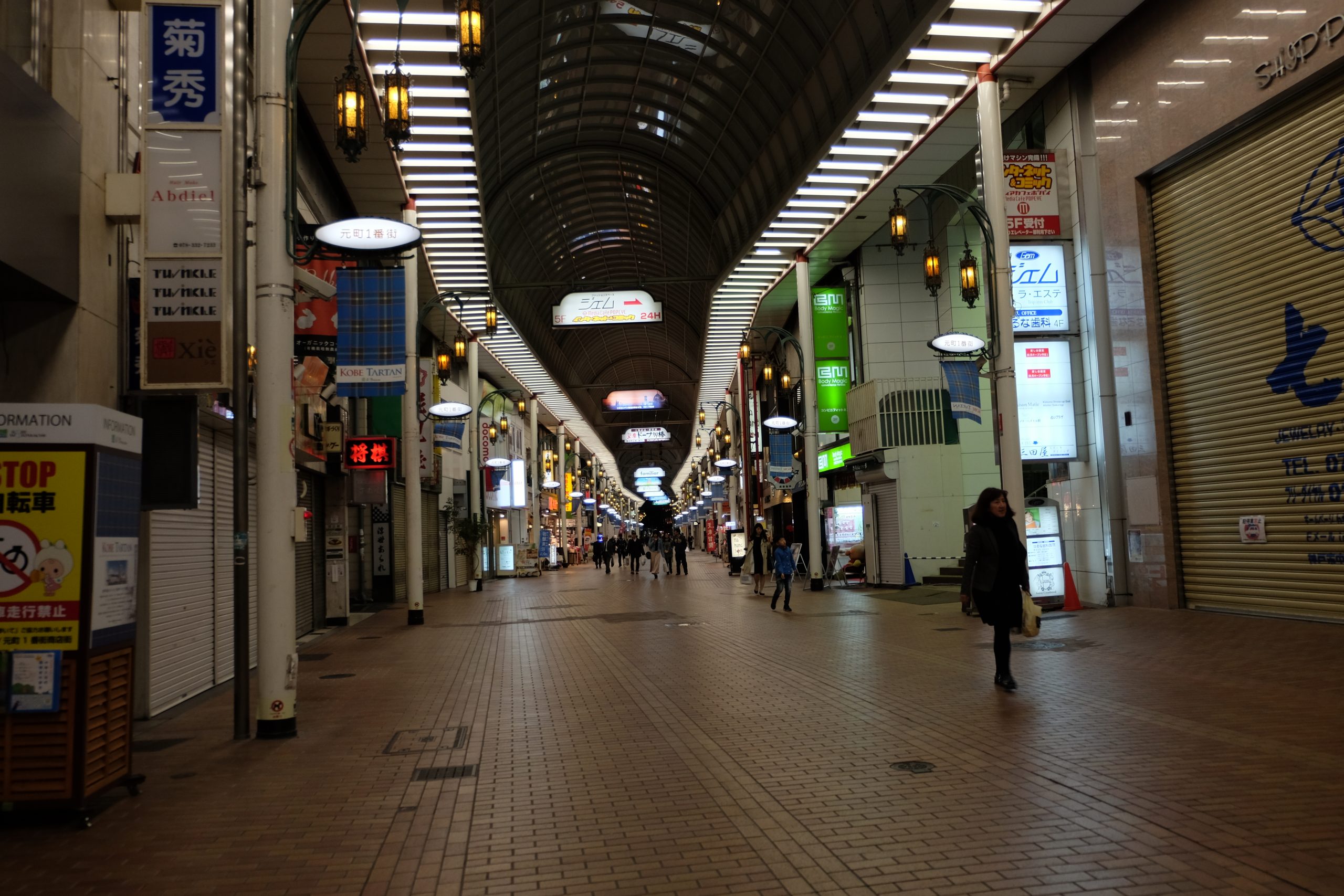
Head to Kobe Nunobiki Herb Gardens, a botanical garden with around 75000 herbs and flowers. It does take about an hour to get here, but in my opinion it’s so worth it. You will see stunning plants, carefully cared for, but also one of the best views of Kobe. I suggest spending around 1-2 hours here. If you get hungry, make sure to try the cake from the restaurant on site.
From the gardens, hike for 40 minutes towards the Nunobiki Falls, a set of waterfalls which have been mentioned in Japanese literature (Tales of Ise) and art. Nunobiki Falls is composed of four different falls, Ontaki, Mentaki, Tsutsumigadaki, and Meotodaki, each looking stunning. I know it sounds like a lot of hiking, but I, personally, think this is one of the best highlights in Kobe and a must-see here.
Time to hike back towards the Kobe centre, where you will dine on the finest Kobe Beef. Kobe beef (aka Wagyu beef) is raised in Japan’s Hyōgo Prefecture, and it’s especially celebrated for its marbling and buttery, smooth texture. Now, since this type of beef is so celebrated, you can expect prices to be fairly high. I recommend trying one of the steak restaurants a few minutes walk from Sannomiya station. That’s where you will find the best Kobe beef restaurants.
In the evening, head to Kikuseidai, the famous view point on the top of Mount Maya-san in Kobe. It’s called the ten million dollar night view, and it offers stunning views of Kobe and Osaka! Honestly, it looks incredible, especially on a clear day. I only recommend going here after it gets dark to really appreciate how impressive the lights of the two cities are. Fun fact, the view got its name because of the high cost associated with maintaining such number of lights to lit up both Kobe and Osaka.
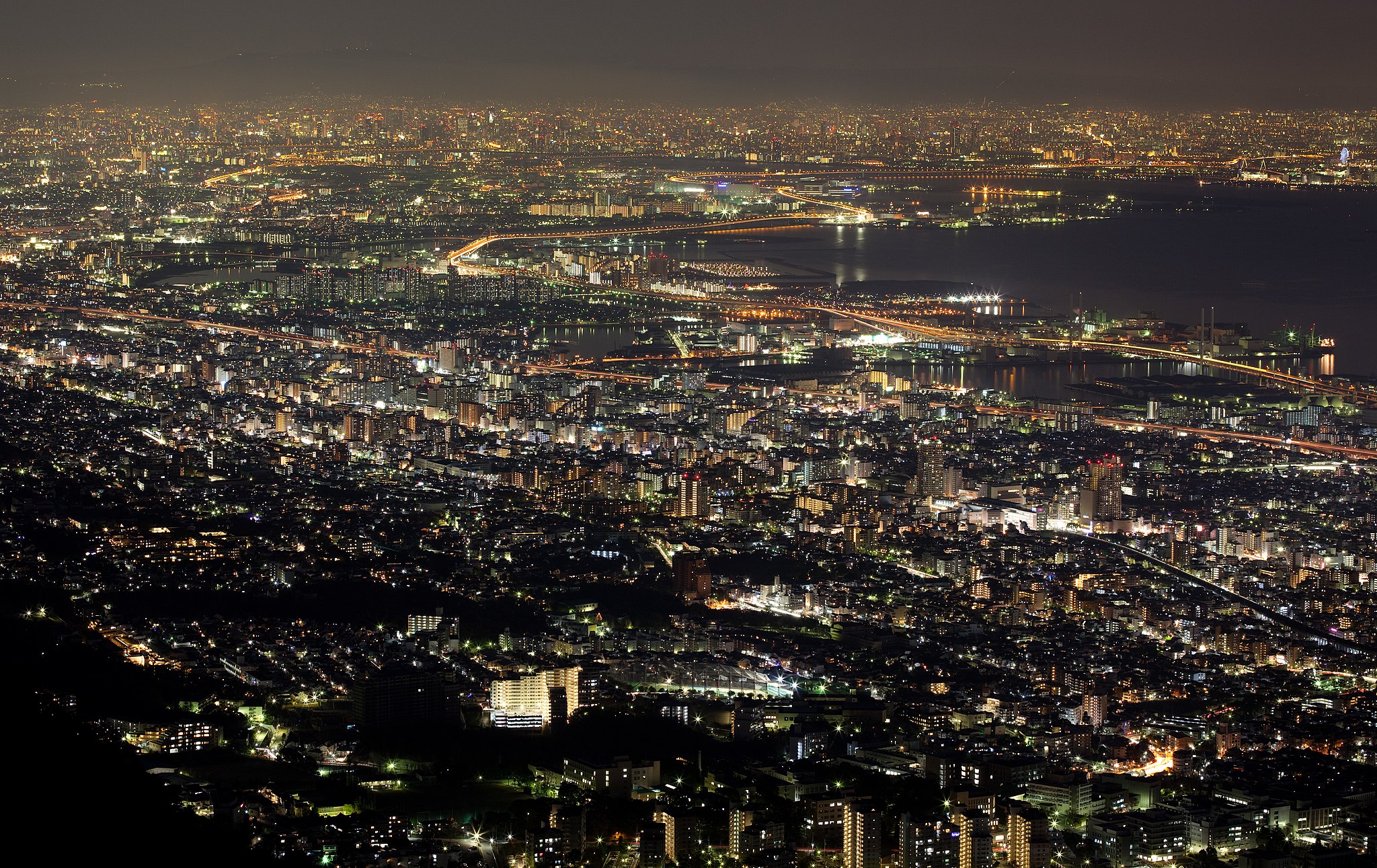
Laitr Keiows, CC BY-SA 3.0, via Wikimedia Commons
Day 20: Hiroshima
No 3 weeks in Japan are complete without a day trip to Hiroshima. Hiroshima is the 9th largest city in Japan, with still a sizeable popular of over 1.2 million people. Adding Hiroshima to the Japan route is a must because there is so much beauty and history to be discovered here.
Kick-start the day with a trip to the Atomic Bomb Dome, which is the well known historic remain of the atomic blast. It has been a designated UNESCO World Heritage Site since 1996. The building acts as an important remainder to the lost lives and devastation of the World War II.

Continue to the Hiroshima Peace Memorial Museum, located just minutes from the Atomic Bomb Dome. Now, I need to stress that a visit to this museum might not be for the faint of heart. I am very keen on history, but I found it very difficult myself. I think a visit is crucial as it is an important remainder why peace is most important. But the museum is heavy, so keep that in mind.
Head to the Peace Park and take a moment to appreciate that this incredible city was once the first city in the world to be bombed by a nuclear bomb. In my opinion, the most powerful place to visit in Hiroshima is the Children’s Peace Monument with the representation of Sadako Sasaki, a young girl who dies of leukaemia from radiation as a result of the atomic bomb. You will see many paper cranes here, these can be traced back to Sadako Sasaki who kept folding them until the very end. The paper cranes you see on site are sent by people and then displayed in the park. The park maintains a database about the contributors.
Walk for 15 minutes and head to the Hiroshima castle, which is a recreation of the destroyed 16th century castle. Enter the museum to learn about its history and head to the top to admire Hiroshima from above.
Don’t miss eating Momiji manju, my favourite desserts, which are maple-leaf shaped cake with red bean paste inside. Some come with custard on the inside, and they are just so delicious. But since autumn and Japanese acers are my favourite, you can imagine how much I loved these treats.
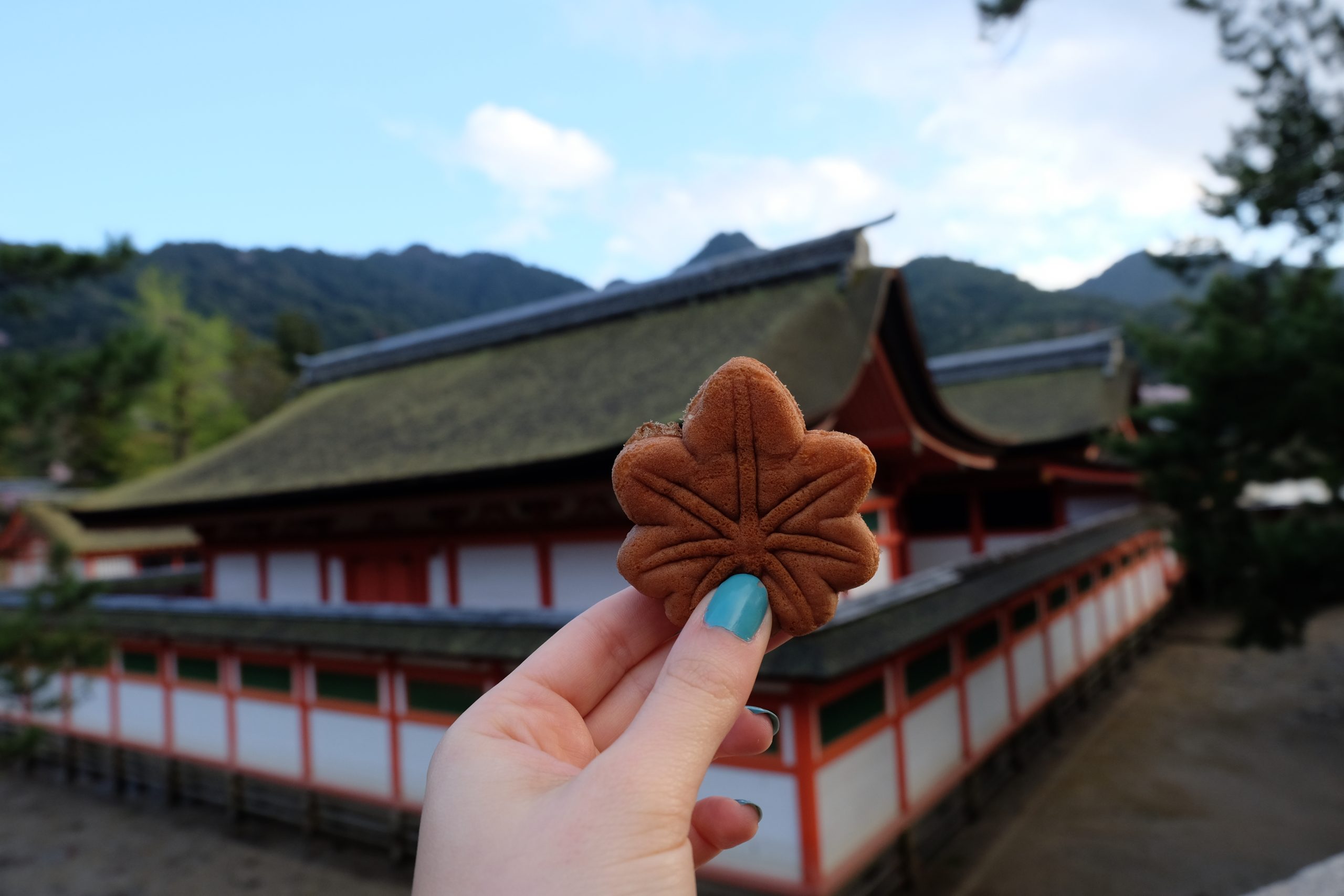
For dinner, I recommend trying the anago which a saltwater eel served on a bed of rice. It’s a specific dish from here in Hiroshima and you can find it with ease in many restaurants. For something fancy, try a platter of oysters from “Lemon & Oyster Garden” restaurant.
End the afternoon with a relaxing walk around Shukkeien, which is the most beautiful garden in the city. You’ll see landscaped gardens with perfectly manicured trees and a superb pond. Purchase the fish food for just 100 yen and feed the fish in the pond. Then relax on a bench and take a moment to reflect on the day.
Day 21: Miyajima Island
You’re ending this Japan itinerary on a high with a visit to one of the most beautiful places in the country: Miyajima Island. Miyajima Island is known for its floating torii gate.
To get to Miyajima island, you will need to take a ferry. You can take a ferry from either Hiroshima Peace Memorial park or from Miyajimaguchi. If you take it from Miyajimaguchi, you can take the JR Ferry, which is covered by your Japan Rail Pass.
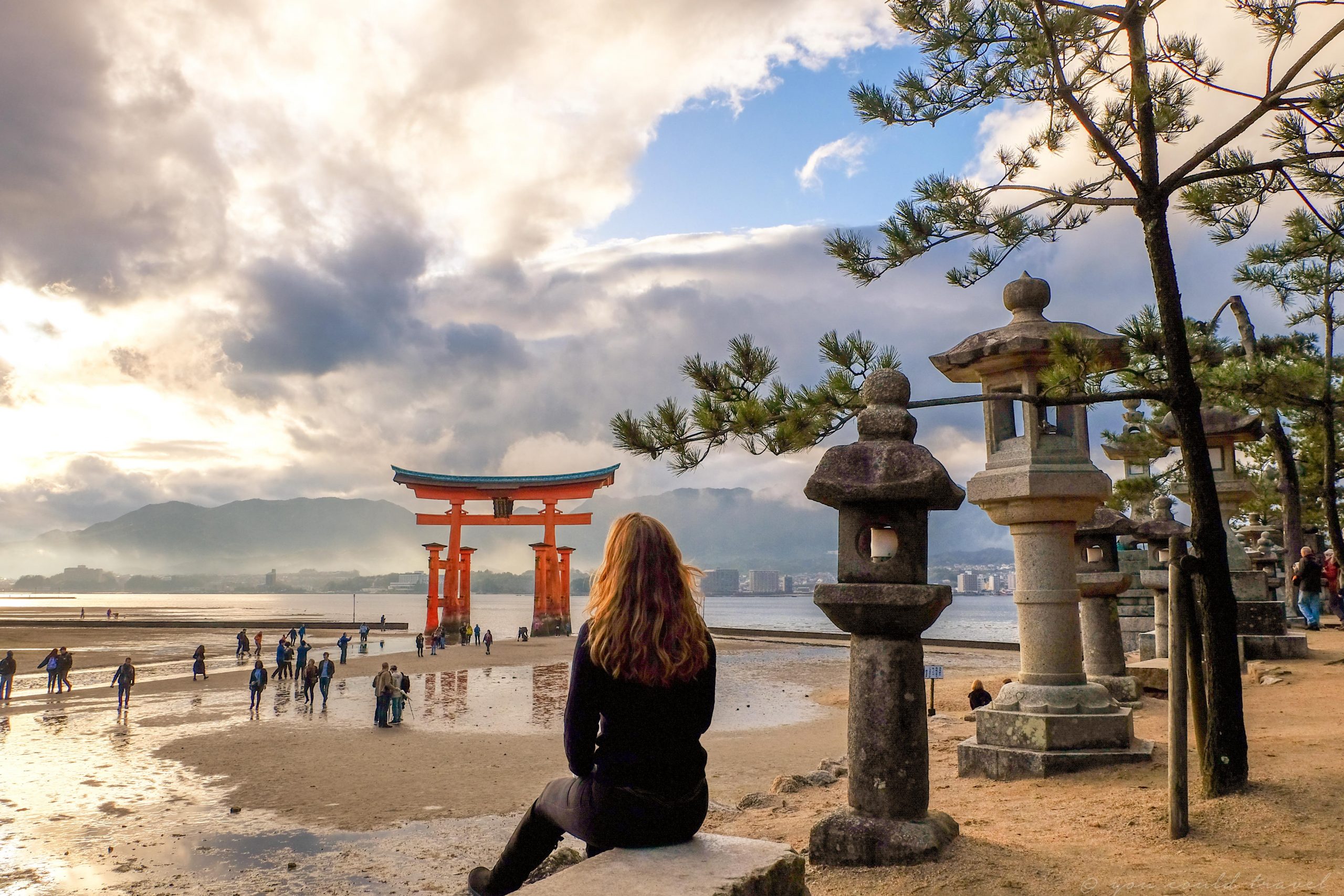
Once you arrive at the Miyajima island, take the Miyajima Omotesandō Shōtengai, a vibrant area lined with restaurants and souvenir shops.
I recommend stopping here for lunch. Try the Tsukemen, cold noodles with dipping red pepper sauce. It’s a local speciality and I really loved it. Alternatively, some maple shaped cod roe cakes on a stick are also a great snack.

After lunch, continue towards the floating torii gate (Itsukushima Shrine). You will find plenty of semi-tamed deer here too. I found these guys to be a little wilder than the ones in Nara.
It’s worth mentioning that some people really want to see the Itsukushima Shrine on high tide only. Check the tide table here and organise your arrival based on your preference. We arrived at a low tide, which was great because it enabled us to get close to the gate for pictures.
Remember to check the timetable for the last ferry back to Hiroshima. From Hiroshima, get the Shinkansen to either your accommodation or to the airport as needed.
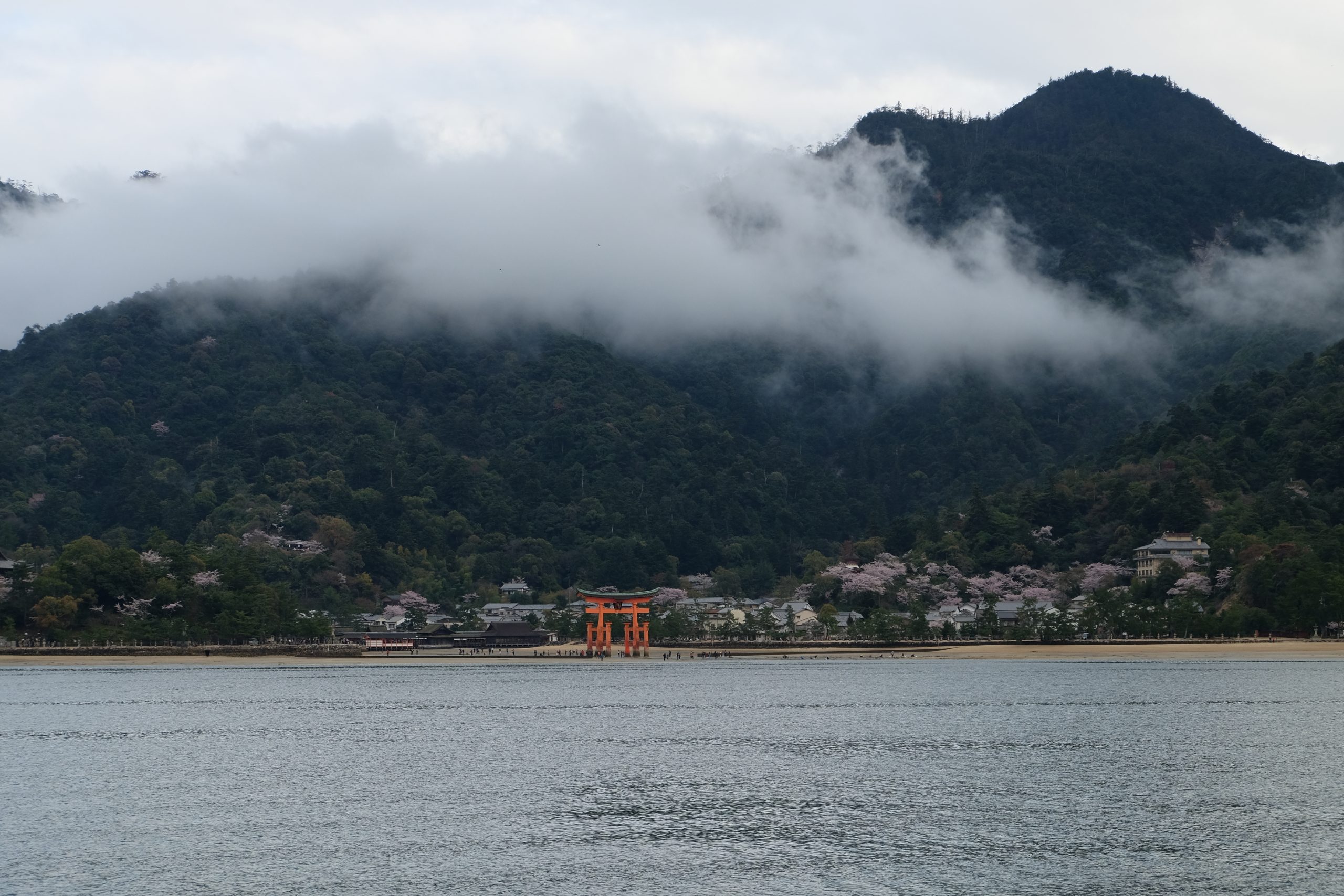
Best time to visit Japan
The short and quick answer is Autumn. Autumn is the best time to visit Japan because the weather is lovely, the foliage is incredible and prices for accommodation tends to go down. Winter is a great time to visit Japan is you are on a strict budget or want to visit the winter festival in Hokkaido. Summers tend to be quite hot and humid. Spring in Japan is the most expensive time to visit due to the cherry blossom festival and the Golden Week celebrations.
We visited Japan during all seasons and spent roughly one month in each. We loved our time during the cherry blossom festival, as the whole country truly is a place of celebration. Autumn was wonderful because the crowds started thinning out, and the weather was absolute bliss. Tokyo showed its true colours with the myriad golden Ginkgo Biloba trees.
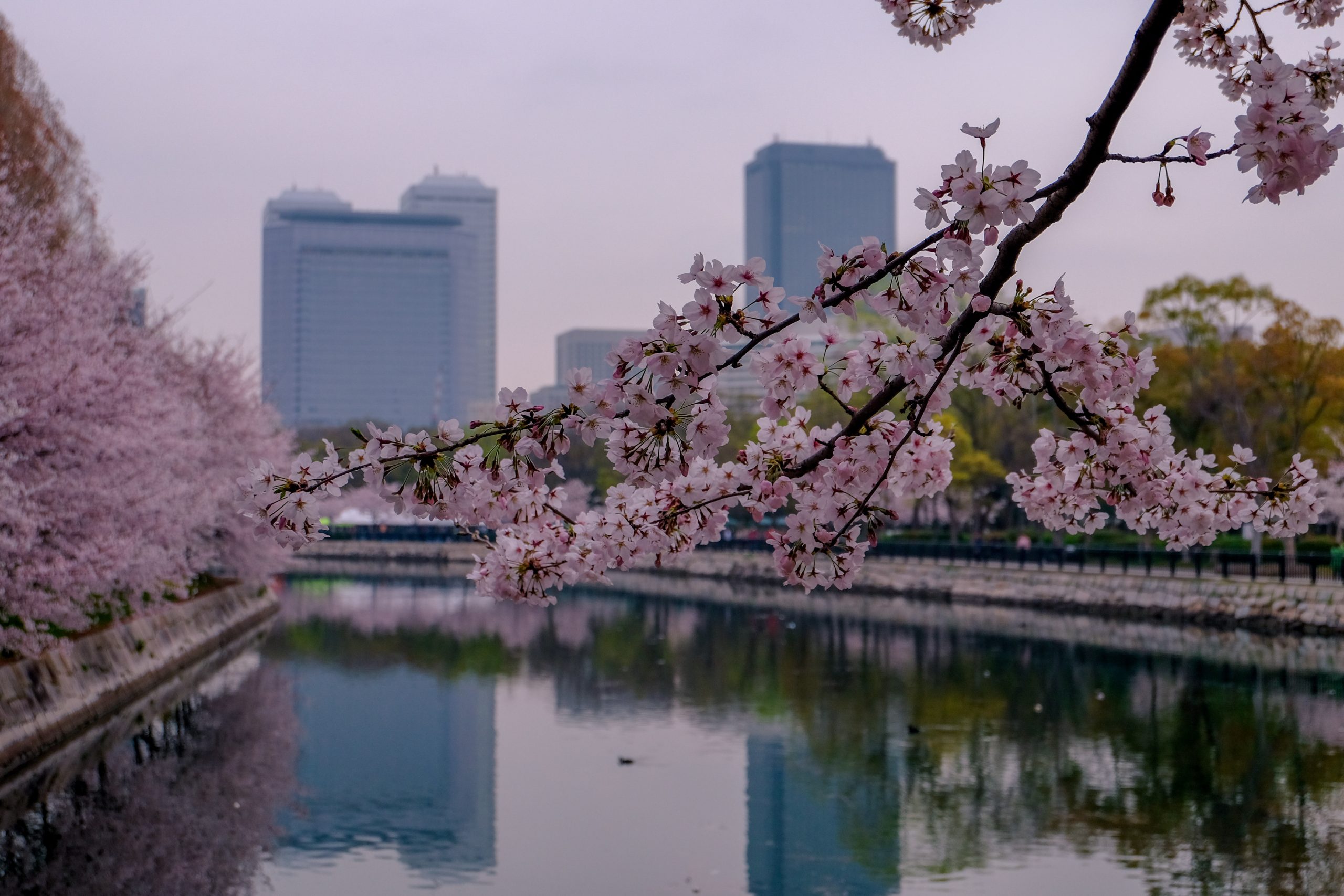
Japanese Etiquette
As with any new culture, it is advisable that you take some time to familiarize with the rules and etiquette for that country. It is especially important that you pay attention to how to behave in a Japanese restaurant, for example, as you could end up seriously offending someone.
Manners and customs are significant in Japan, and even though you are a tourist in the country, you are still expected to follow a few common rules.
You can learn a few words in Japanese. For example:
- Hello – Kon’nichiwa
- Thank you – Arigatō
- Please – Kudasai
- Goodbye – Mata ne
- Excuse me – Sumimasen
I strongly recommend my book How To Behave In Japan: Essential Japanese Manners & Etiquette. I wrote this book to help you familiarise yourself with basic Japanese manners and etiquette. You’ll learn general manners, tips, and tricks on how to act like a local and understand some of the most essential customs in Japan. I’ll cover shopping, public transport, restaurants, onsen, business environments and more. By the time you finish this book, you will feel confident in your newly acquired Japanese etiquette skills and blend in with the locals during your time in Japan.
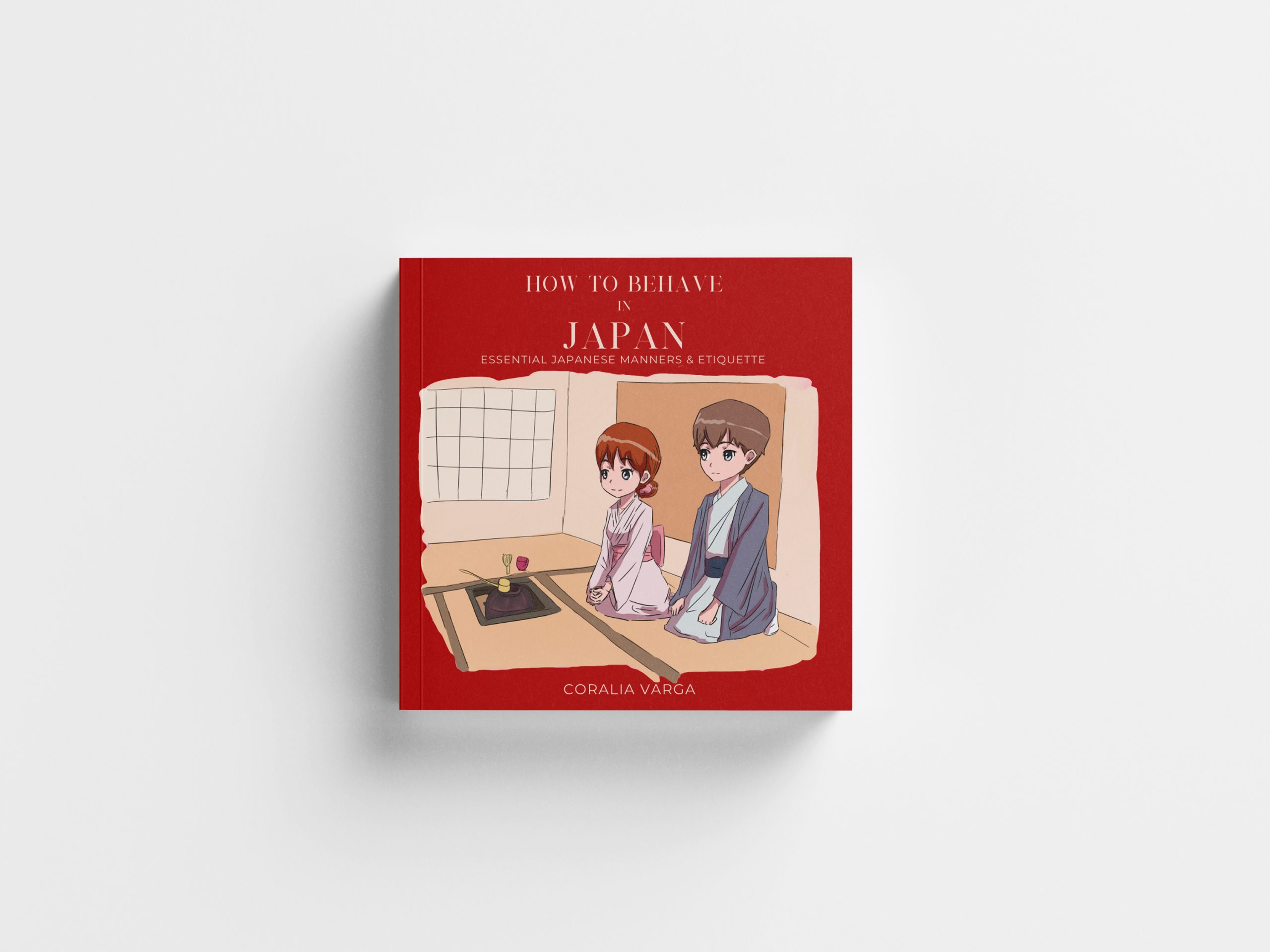
Language in Japan
It is believed that many Japanese don’t speak good English. Well, the fact of the matter is, they do speak English, but they are a little too shy to practice their language skills with you. Most people will be happy to help despite the language barrier. Just be polite and patient. If someone is clearly uncomfortable talking to you, just smile, nod, thank them and move to the next person.
Most restaurants have images next to the menu items, so you can easily just point at things which look good. Don’t worry, Japanese food is pretty wonderful, so you won’t really go wrong with anything you order. If you have any food allergies, just print them on a piece of paper and translate them to Japanese using Google Translate.
Tip: Want to learn Japanese before your trip to Japan? Make sure to read about our review of the courses called Japanese with Aimee. We recommend them!
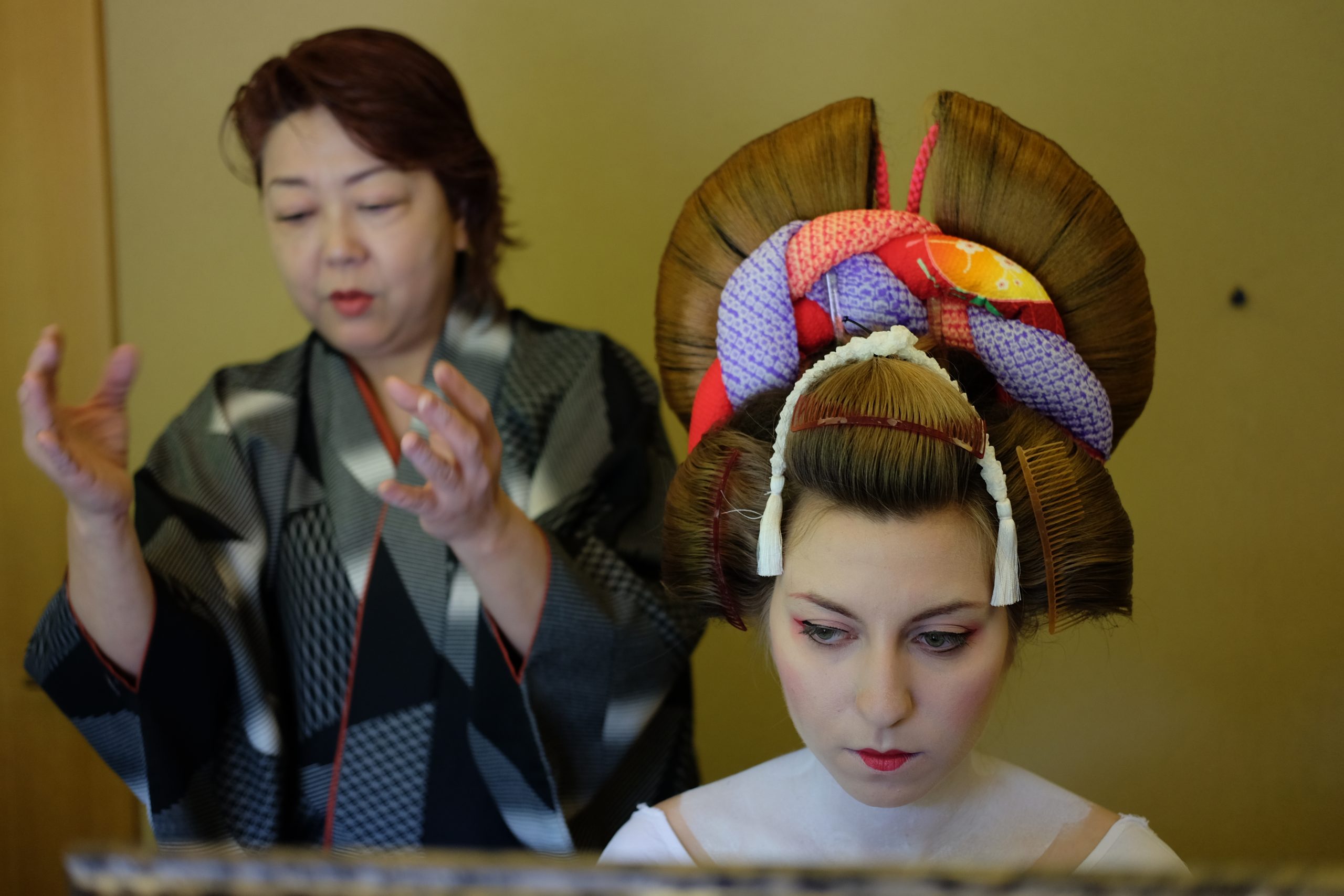
Final Thoughts
I hope you enjoyed this Japan 3 week itinerary just as much as I did. I made sure to make it in such a way that it truly is full of authentic Japanese culture, delicious food and incredible sights. You are ready for your trip and I have no doubt you are going to love every minute of it. As always, I love to hear from you, so if you have any questions or suggestions, make sure to leave a comment down below. Matane!



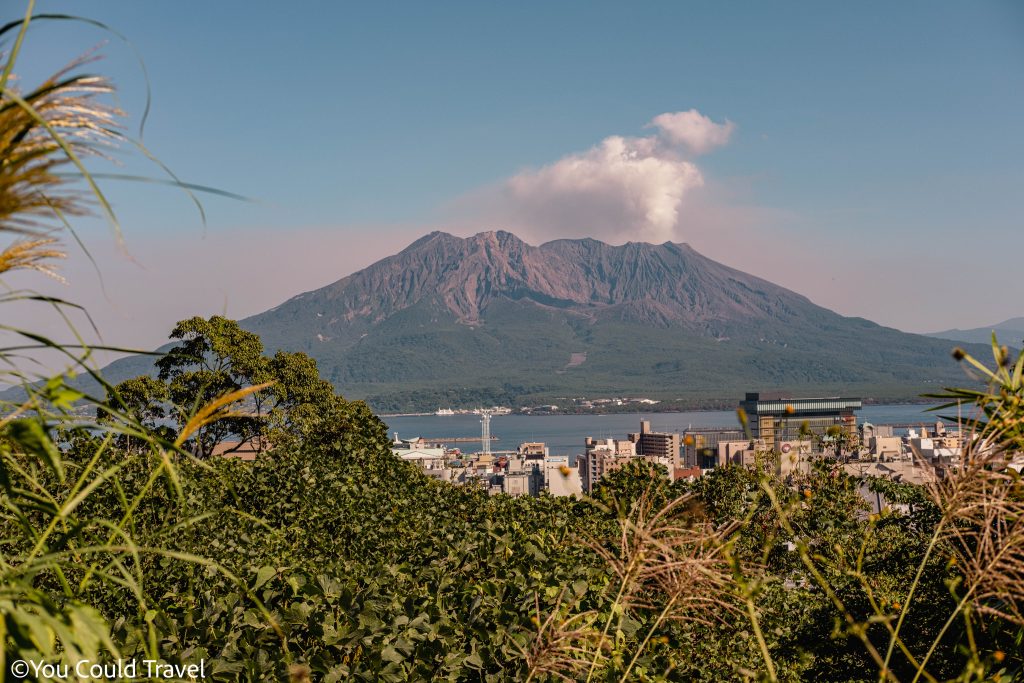

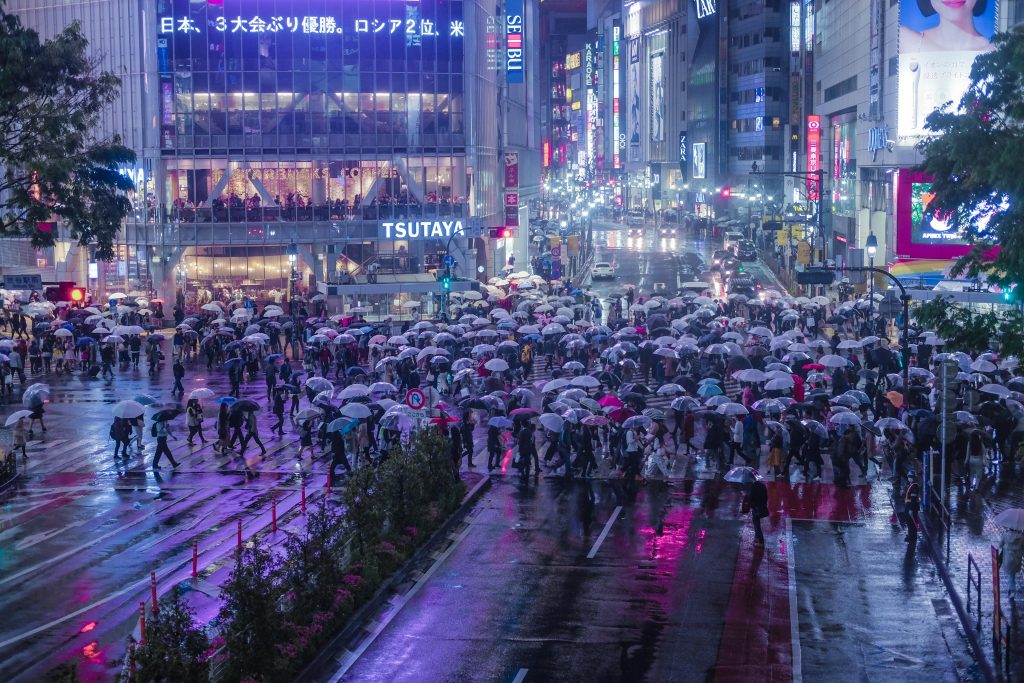
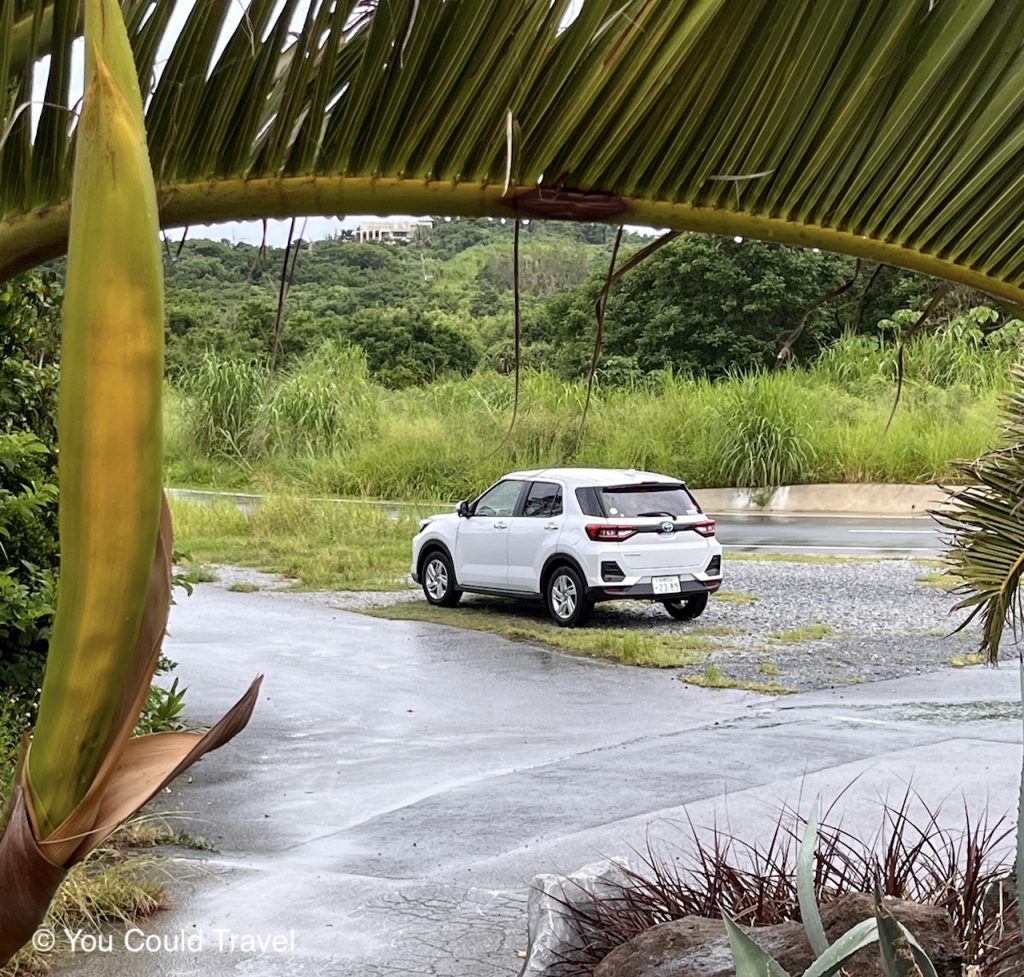
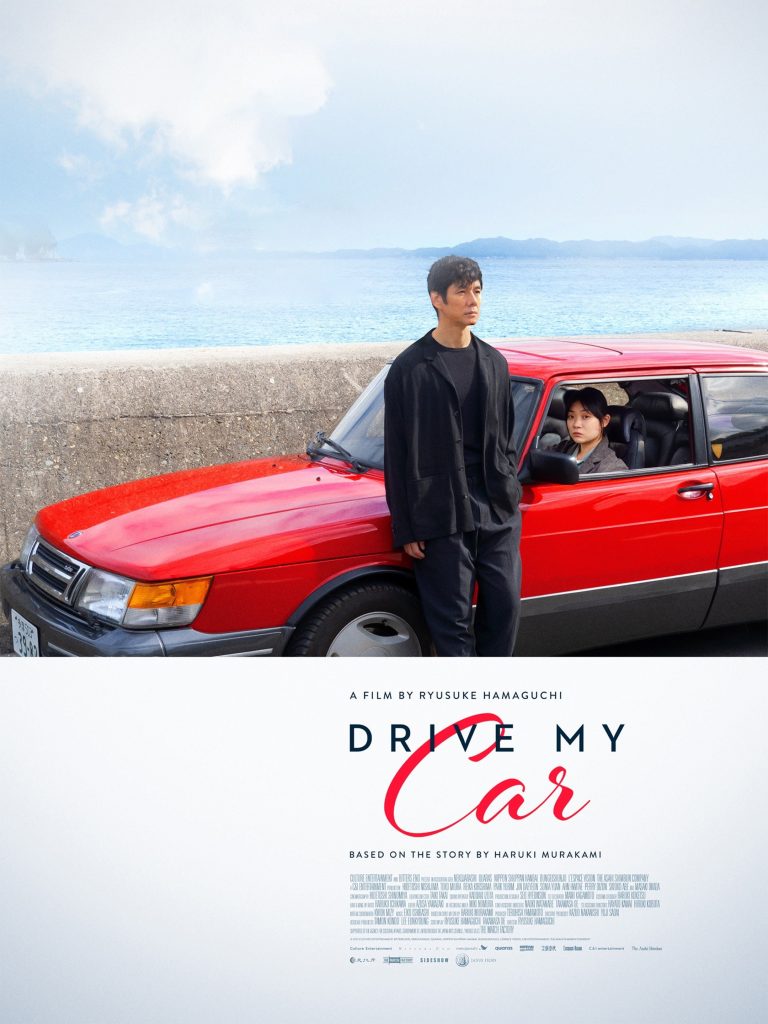


Leave a Reply